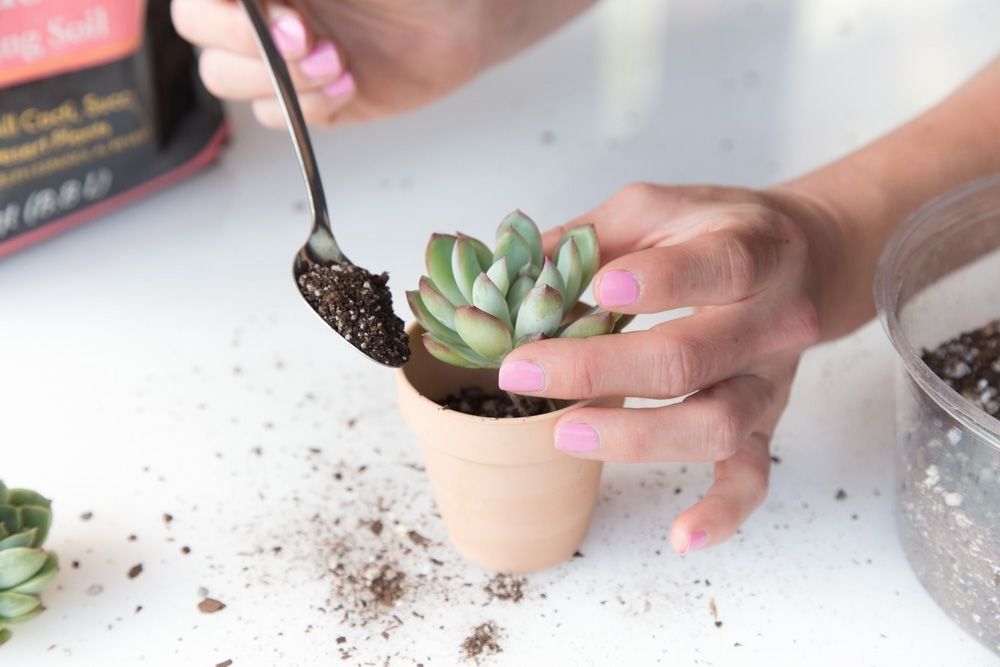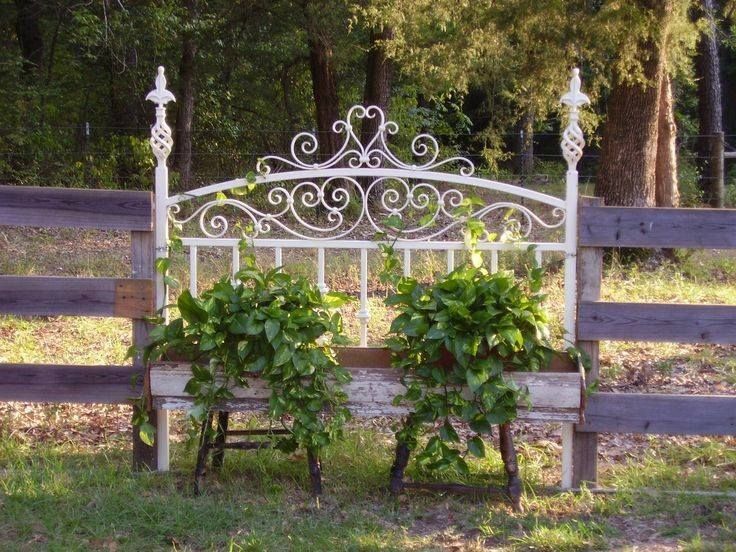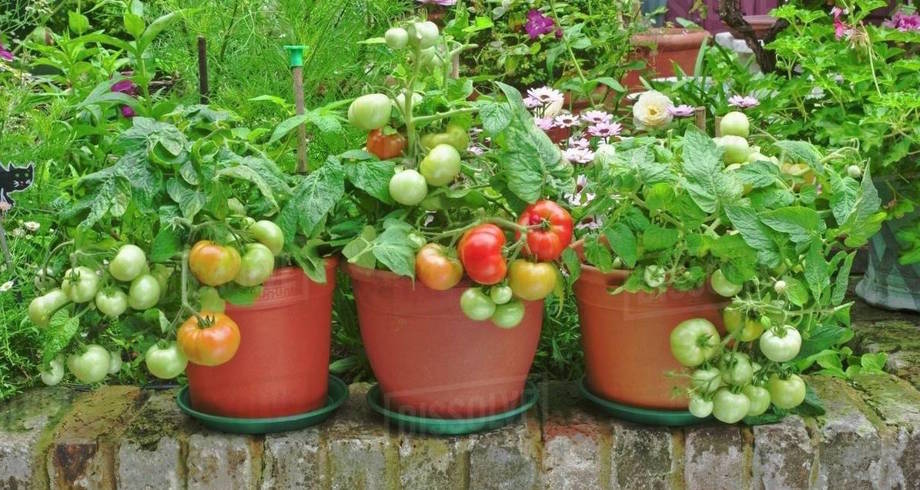Hedge plant ideas
Best fast-growing hedges: 10 ideas for structure and boundaries
(Image credit: Getty )
Fast-growing hedges offer a quick way to transform and reinvent your garden. Whether you are in search of something to define the boundaries of your property, to provide privacy and screening or to help support your local wildlife, hedges are a versatile addition to the garden.
They can also be used to provide your backyard ideas with structure and shape, helping to add height or visual interest – you could even try topiary for which fast-growing hedges are ideal.
'Fast-growing hedges can be sheared into geometric shapes or allowed to grow naturally. Always select a plant that has the desired shape and mature size to help minimize pruning,' says garden expert Melinda Myers , 'If you like the formal sheared look consider plants that tolerate this type of pruning. For an informal or natural look that would befit cottage garden ideas, keep pruning to a minimum. Consider hedging plants that also provide flowers, fall color and fruit if it fits in your landscape design. '
Fast-growing hedges
When you want to add a hedge to your garden, the thought of having to wait a decade for it to establish is probably not what you had in mind. On the other hand, fully grown hedges are an expensive purchase, especially if you want to have a long section of hedge between yourself and a neighbor's property.
Therefore, fast-growing hedges are an ideal solution that will quickly establish and grow – your only challenge will be to keep them in check, however this is easily done with regular pruning and shaping. Pruning at regular intervals will also keep your hedge looking beautifully manicured.
Hedges are also a great choice for creating boundaries and should be factored in when you're thinking about how to plan a garden. 'Plant fast-growing hedges for your boundaries – they are good for wildlife and the environment by absorbing pollution. Use mixed wildlife hedging in rural areas and dense evergreens in the urban environment,' recommends Period Living garden expert Leigh Clapp.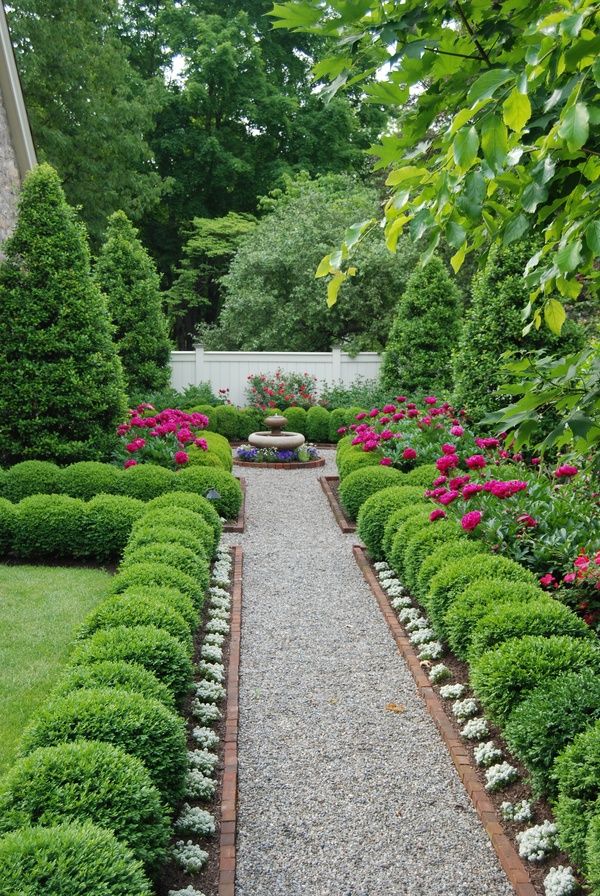
1. Best plant to create purple fast-growing hedges
(Image credit: Getty Images)
Often known as 'the purple bush', loropetalum shrubs make for eye-catching fast-growing hedges. Its beautiful purple leaves offer a stunning contrast to the other brown and greens that define the garden.
Growing in hardiness zones 7 to 11 without any additional care, these pretty fast-growing hedges do best when they are planted in full sun, as it is the light from the sun that causes its leaves to be that beautiful purple shade. Loropetalum will also be more likely to thrive in gardens that are subject to long, hot summers, so are best avoided in cooler areas. However, if you live in cooler regions, there are still plenty of fast-growing hedges that you can plant in your garden.
2. The best fast growing hedges for sweet scent
(Image credit: Getty Images)
Mock orange, also known as Philadelphus, are adored for their dainty sweet-smelling flowers which bloom in summer.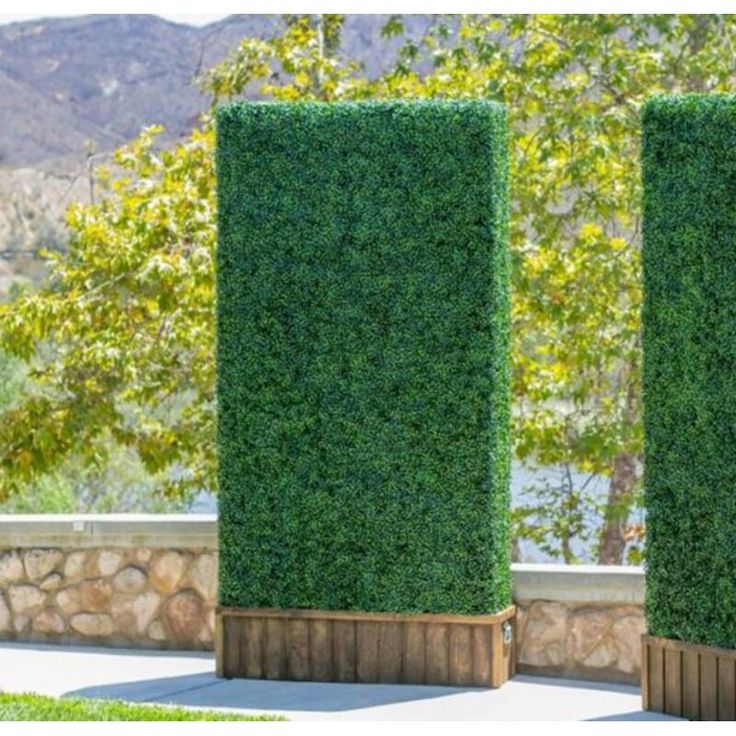 A brilliant addition to sensory garden ideas, mock orange shrubs are a reasonably hardy shrub and can be grown anywhere from zones 4 to 7. Plus it is relatively easy to care for.
A brilliant addition to sensory garden ideas, mock orange shrubs are a reasonably hardy shrub and can be grown anywhere from zones 4 to 7. Plus it is relatively easy to care for.
Growing more than two feet per year, mock orange are exceptionally fast-growing hedges and if left unchecked will quickly reach more than 12 foot tall. As with all fast-growing hedges pruning is vital.
'Mock orange is a deservedly popular medium-sized deciduous shrub with highly perfumed cascades of pure white flowers for many weeks through May to July,' says Leigh Clapp, 'It grows in sun or part shade in any fertile, well-drained soil, including coastal gardens.'
3. Best fast-growing hedges for winter color
(Image credit: Getty Images)
A favorite of winter garden ideas, cornus, or as it is more commonly known red twig dogwood, makes for a vibrant display on its own or as part of a hedge.
Creating a bank of crimson stems, these fast-growing hedges look just as good in winter as they do in the height of spring – in fact, they may even look better. 'During the summer, it blooms flowers and berries. It has red bark that looks beautiful year-round,' says Emilly Barbosa Fernandes, expert small space gardener and consultant at HouseGrail .
'During the summer, it blooms flowers and berries. It has red bark that looks beautiful year-round,' says Emilly Barbosa Fernandes, expert small space gardener and consultant at HouseGrail .
With it's dense twiggy structure, it is also great to use as part of garden privacy ideas, plus since dogwood are very easy to propagate – simply cut a branch that's about the thickness of a pencil and put in a pot of quickly – it is a very affordable to quickly grow your hedges.
4. Best fast-growing hedges for year-round privacy
(Image credit: Getty Images)
If you're trying to select the best hedges or best trees for privacy and screening in a backyard, then opting for an evergreen variety is a must. The shrubby honeysuckle is an excellent choice for fast-growing hedges, as its dense leaves and branches provide year-round greenery and screening.
'The shrubby honeysuckle can grow between 15-23 inches in a year, so if you don’t want a tall shrub, make sure to keep it trimmed,' says Emilly. 'The shrubby honeysuckle is an evergreen that becomes denser as you clip it. It has tiny leaves that may produce flowers in the spring and berries in the autumn.'
'The shrubby honeysuckle is an evergreen that becomes denser as you clip it. It has tiny leaves that may produce flowers in the spring and berries in the autumn.'
It is worth noting that shrubby honeysuckle can be invasive so if you decide to grow it in your garden, then it's vital that you keep it in check with regular pruning.
(Image credit: Getty Images)
These pretty fast-growing hedges are loved for their colorful and sweet smelling flowers. 'Lilac is a beautiful addition to the garden with its sweet fragrant smell and draping lavender blooms that cascades from the shrub,' says Tammy Sons from TN Nursery .
For the best chance of a healthy plant, pick a spot with fertile, well-drained soil and lots of sun. In the right conditions, lilacs can grow around two feet per year, plus they are fairly hardy and will thrive in zones 3 through to 7.
'The lilac makes a great choice if you’re looking for fast-growing hedges,' says Emilly Barbosa Fernandes, 'but if you don’t trim it back, it will grow out of control'.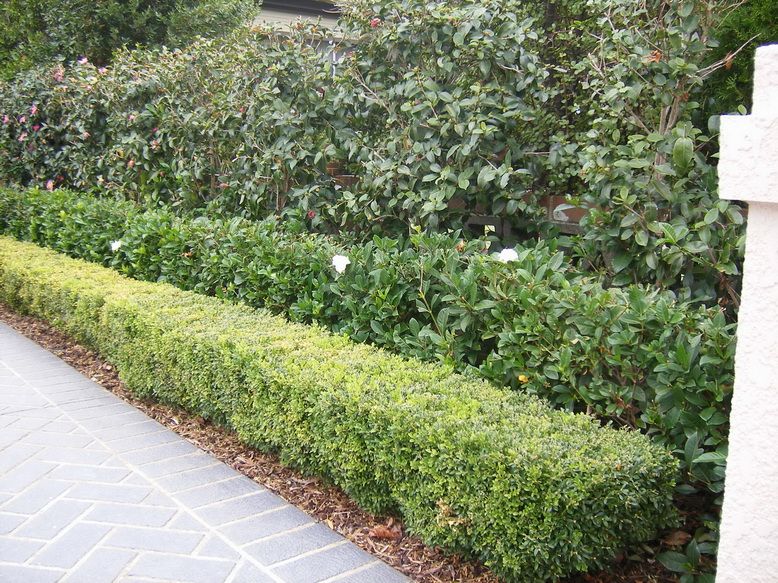 Therefore, it is vital that you know how to prune lilac before adding these fast-growing hedges into your garden.
Therefore, it is vital that you know how to prune lilac before adding these fast-growing hedges into your garden.
6. Prettiest fast-growing hedges
(Image credit: Getty Images)
If you want fast-growing hedges that also bring beauty to the garden, then camellia hedges are perfect. Blossoming with beautiful rose-like flowers in late winter or early spring, they create a stunning addition to winter garden ideas and will help to brighten those darker days.
Camellias are also some of the best winter plants for pots and borders and as an evergreen, they keep their leaves all year round. This means that when they are grown as a hedge they are perfect to incorporate into your garden privacy ideas.
As with any addition to your garden, knowing how to care for them is vital. With camellias, there is particular importance on knowing how to prune camellias as this will keep these fast-growing hedges under control and looking their best.
7. Best fast-growing hedges for early spring color
(Image credit: Getty Images)
Forsythia is a great choice for fast-growing hedges.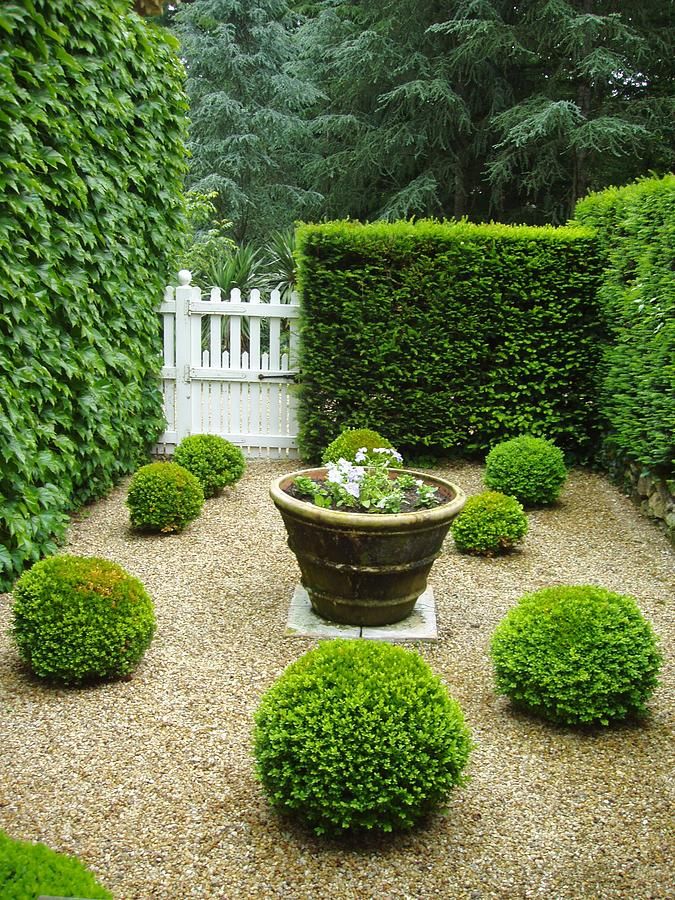 It's one of the hardiest fast-growing hedges, being tolerant to both drought and salt and hardy from zones 5 through to 8. It will reach heights of up to 10 feet and will grow approximately two feet per year.
It's one of the hardiest fast-growing hedges, being tolerant to both drought and salt and hardy from zones 5 through to 8. It will reach heights of up to 10 feet and will grow approximately two feet per year.
Regardless of its durability, it is the flowers that sway homeowners towards these fast-growing hedges. 'One of the first spring bloomers, they erupt in lemony yellow clusters that welcome the coming season,' says Tammy Sons. However, be careful when pruning as the flowers grow on last year's growth. Therefore, it is important to prune at the end of the flowering period rather than wait until the following fall.
8. Best fast-growing hedges for greenery
(Image credit: Getty Images)
Laurel is a classic choice to create a quintessential green hedge in your garden. With its large glossy green leaves, it creates a dense border which is ideal for use in front yard landscaping ideas.
‘The laurel grows roughly 11 inches per year and can be grown as both hedging plants and topiary.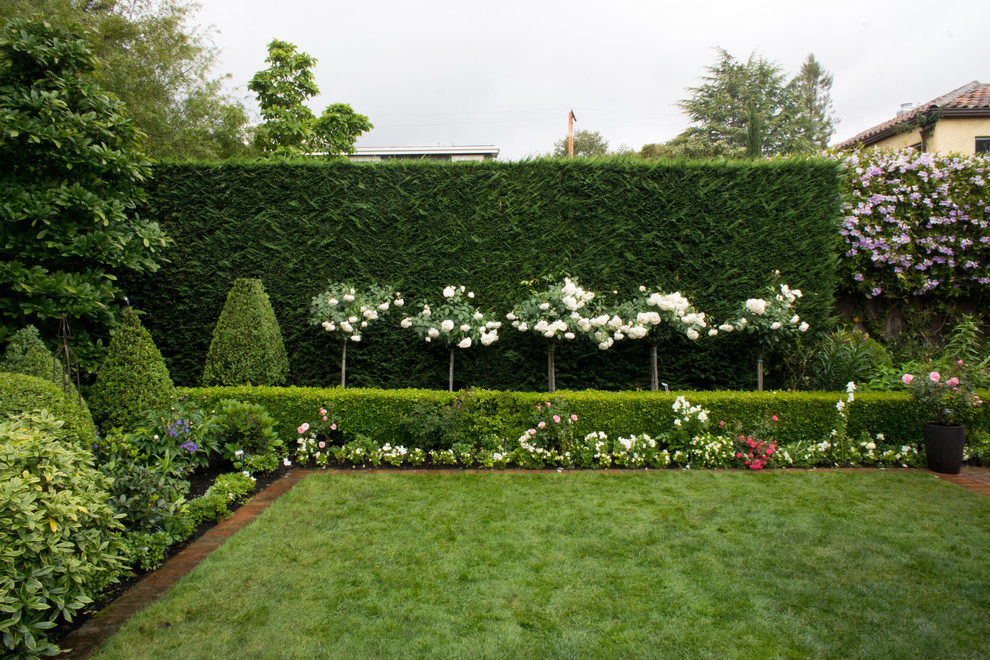 If you’re looking for flowers in the summer, the cherry laurel is a good choice,’ says Emilly.
If you’re looking for flowers in the summer, the cherry laurel is a good choice,’ says Emilly.
Smartly clipped laurel hedges and topiary are characteristic of English garden ideas and offer a good alternative to the slower-growing box hedges.
9. Best fast-growing hedges for wildlife
(Image credit: Getty Images)
If you're looking for fast-growing hedges that will help to encourage wildlife into your garden, then the hawthorn is your best option. 'One of the most common hedgerow shrubs across the UK but also grows well in the North American states,' says Leigh Clapp. The hawthorn will grow between one and two feet per year meaning it will quickly establish itself as a defined part of your garden.
Also known as the thornapple, it is descended from the rose family and is loved for its pretty nectar-rich flowers and bright red-orange fall berries. 'The Hawthorn provides food for some 150 different insect species and is tolerant of pollution and exposed sites,' continues Leigh Clapp. This makes hawthorn the ideal addition to your favorite wildlife garden ideas.
This makes hawthorn the ideal addition to your favorite wildlife garden ideas.
If grown at the border of your property, the thorny branches on these fast-growing hedges also brings with it an element of added security to your home while simultaneously offering a safe space for birds to nest come spring.
10. Best fast-growing flowering hedge for color
(Image credit: Getty Images)
One of our favorite fast-growing flowering trees, Callistemon also makes for a beautiful fast-growing hedge. Growing approximately a foot per year, this stunning plant explodes in an array of vibrant, feathering flowers in spring, and makes for the perfect accompaniment for other tropical garden ideas.
You can also use all of these fast-growing hedging ideas to obscure or complement the harder landscaping in your garden, such as garden wall ideas. Growing a hedge will create a softer and more natural backdrop to your garden as well as offering beneficial food and habitat for wildlife.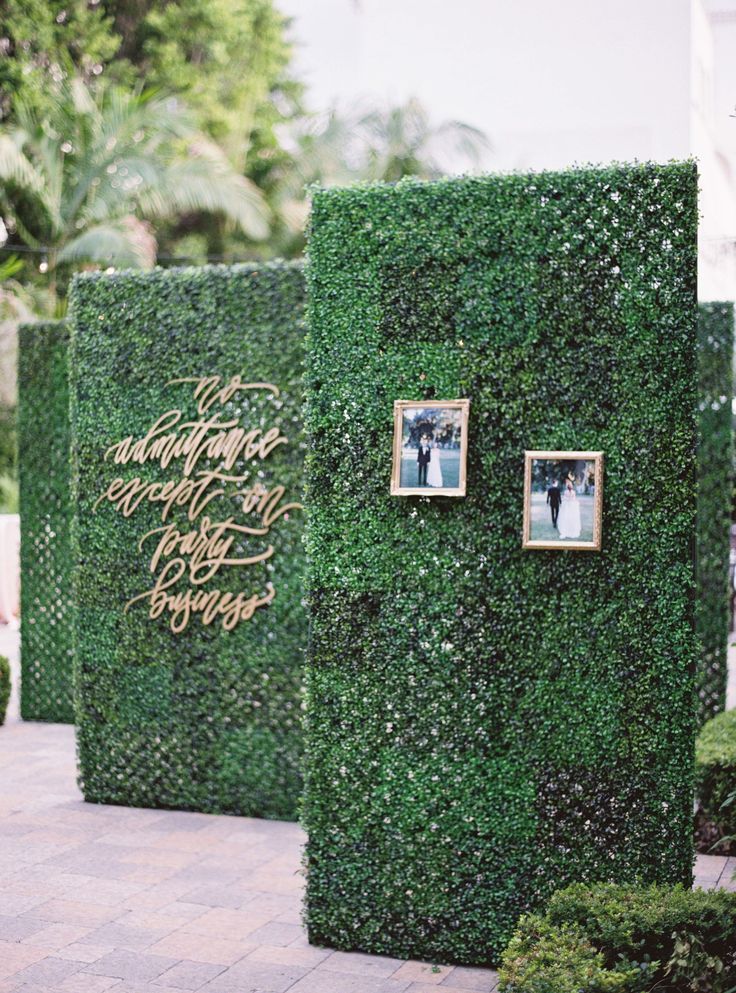 Pick fast-growing hedges with beautiful flowers for added interest.
Pick fast-growing hedges with beautiful flowers for added interest.
What is a good privacy hedge?
Camellia, laurel and hawthorn are all good privacy hedges. These fast-growing hedges are all evergreen and reach a good height.
Evergreen shrubs and evergreen trees for gardens make for the best hedges for privacy as you don't want your privacy to be compromised when the leaves fall off in fall. You will also want to select fast-growing hedges to ensure that you aren't waiting years to achieve the level of privacy you desire.
When should you plant hedges?
You should plant hedges in late fall, however, you can plant them up until late winter, though avoid planting if the ground is water-logged, frozen or frost is imminent.
The optimum planting time for individual fast-growing hedges will vary depending on the species you purchase, so you should always double check the planting directions.
Having graduated with a first class degree in English Literature four years ago, Holly started her career as a features writer and sub-editor at Period Living magazine, Homes & Gardens' sister title.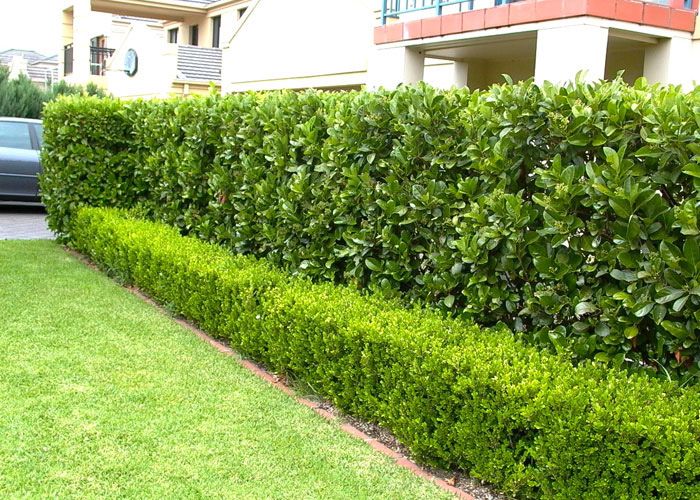 Working on Period Living brought with it insight into the complexities of owning and caring for period homes, from interior decorating through to choosing the right windows and the challenges of extending. This has led to a passion for traditional interiors, particularly the country-look. Writing for the Homes & Gardens website as a content editor, alongside regular features for Period Living and Country Homes & Interiors magazines, has enabled her to broaden her writing to incorporate her interests in gardening, wildlife and nature.
Working on Period Living brought with it insight into the complexities of owning and caring for period homes, from interior decorating through to choosing the right windows and the challenges of extending. This has led to a passion for traditional interiors, particularly the country-look. Writing for the Homes & Gardens website as a content editor, alongside regular features for Period Living and Country Homes & Interiors magazines, has enabled her to broaden her writing to incorporate her interests in gardening, wildlife and nature.
48 Best Plants for Hedging | Beautiful Hedge Plants
Search
Hedge Plants help you create privacy in your outdoor space from neighbors. Here are the Best Plants for Hedging you must try!We have compiled a list of the Best Plants for Hedging that could grow into beautiful hedges without you having to put in too much effort!
Check out the best bamboos for hedging hereBest Plants for Hedging
1.
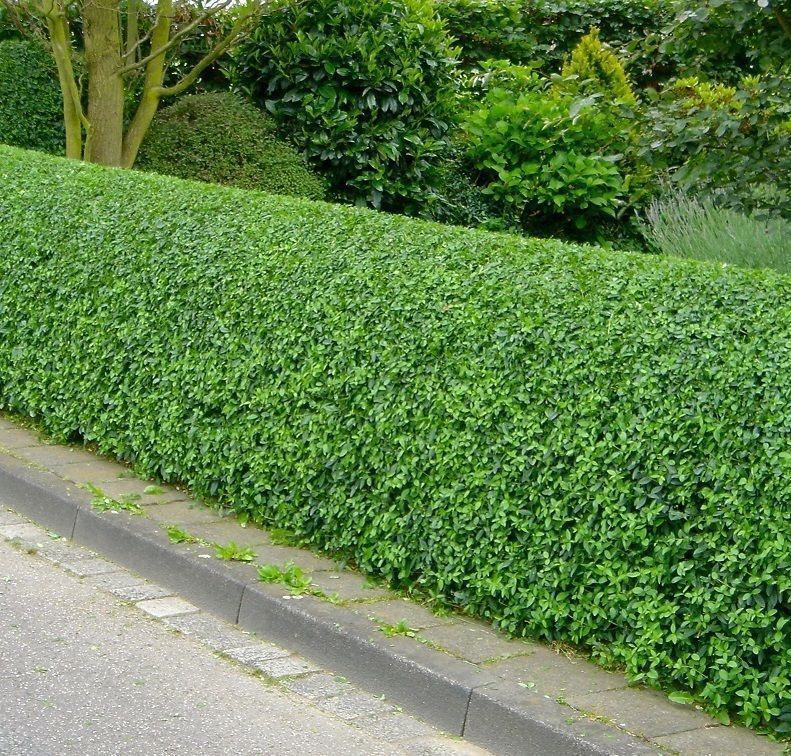 Mexican Orangetheplantstore
Mexican OrangetheplantstoreBotanical Name: Choisya ternata
USDA Zone: 7-9
This plant makes for a great informal hedge with pretty white blooms that also have a sweet scent during spring and summer.
Look at the flowers that start with ‘D’ here2. Boxwood
fast-growing-treesBotanical Name: Buxus
USDA Zone: 6-8
Grow Boxwood that has the potential to tolerate frequent shaping and shearing into different geometric shapes and forms. You can even leave it unpruned for its natural shape.
3. Glossy Abelia
flickrBotanical Name: Abelia x grandiflora
USDA Zone: 6-9
This hedge plant naturally forms an arching mound. The dark green-colored leaves change colors during the fall and turn into purple-bronze.
4. Redclaws
gardendirectBotanical Name: Escallonia rubra var. macrantha
USDA Zone: 8-9
This shiny evergreen shrub has a tendency to grow up quickly and make for an informal hedge.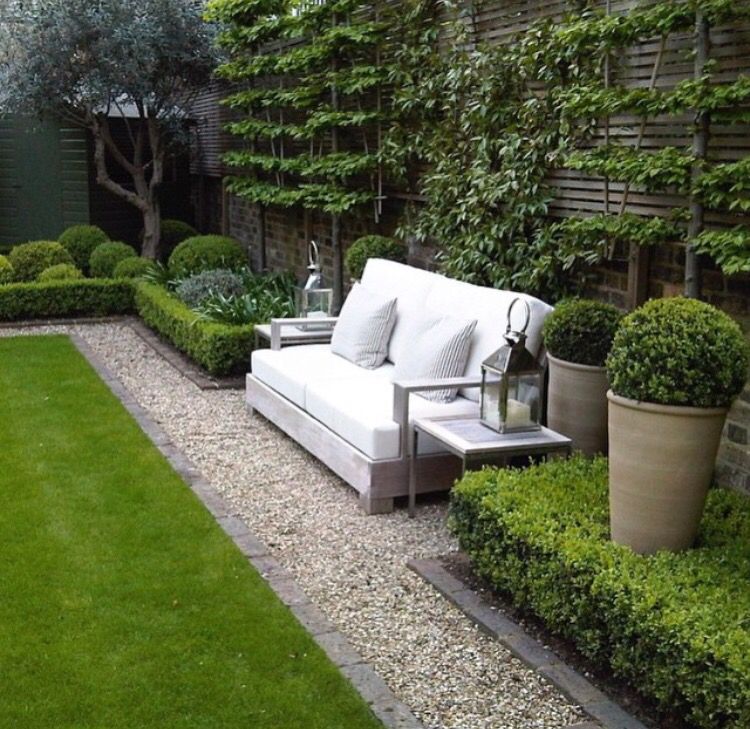 This hedge plant bears rosy crimson-colored flowers from June to early autumn.
This hedge plant bears rosy crimson-colored flowers from June to early autumn.
5. Flowering Quince
davesgardenBotanical Name: Chaenomeles
USDA Zone: 4-8
You can add much charm to your spring garden or landscape with this hedge plant with blooms in shades of pink, scarlet, or white.
Fun Fact: This deciduous shrub consists of sharp-edged spines that keep many animals away.
Check out the best shade-loving shrubs here6. Japanese Spindle
Botanical Name: Euonymus japonicus
USDA Zone: 6-11
This is another hedge plant that grows quite fast with glossy dark green-colored leaves. It cannot tolerate dry weather or drought-like conditions but can handle any kind of soil.
7. Golden Ticket Privet
Botanical Name: Ligustrum x vicaryi
USDA Zones: 5-8
The shiny foliage with cheerful yellow-colored flowers in spring and white-colored bloom in summer make for another great hedge plant.
8. Golden False Cypress
provenwinnersBotanical Name: Chamaecyparis pisifera
USDA Zones: 4-8
Dwarf varieties can make for good hedge plants with their golden foliage. You can preferably go for Gold Mop, Sungold, Filifera Aurea, and Sungold.
9. Oleander
Botanical Name: Nerium oleander
USDA Zones: 8-10
You can always trust an Oleander to be the show stopper with its fragrant flowers in vibrant shades of pink, peach, red, or white from summer to fall.
10. Common Holly
Botanical Name: Ilex aquifolium
USDA Zones: 5-9
Holly could be difficult to establish, but gardeners often would say how this plant is worth preserving. This plant can thrive in extremely polluted areas and winds.
Find out the flowers that start with ‘H’ here11. Yellow Asian Firethorn
Botanical Name: Pyracantha
USDA Zones: 7-10
This hedge plant is prickly and can be so helpful in deterring animals from entering your landscape or garden.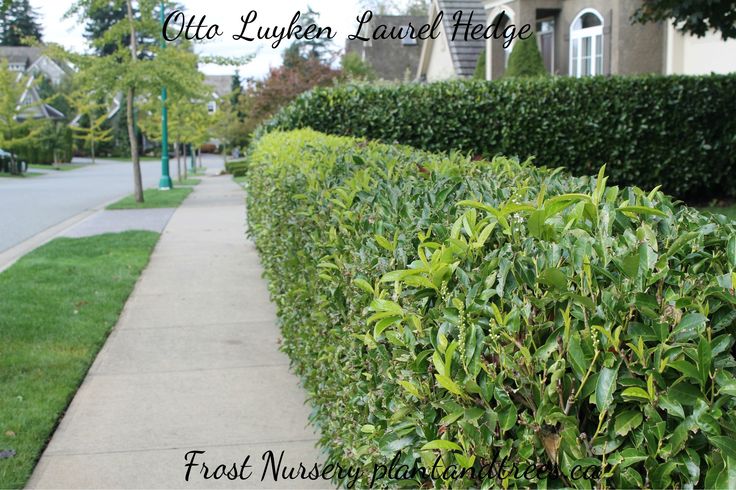 It is also another fast grower and looks great with white flowers.
It is also another fast grower and looks great with white flowers.
12. Spirea
Botanical Name: Spiraea
USDA Zones: 3-8
With pink or white flowers and glossy foliage, Spirea makes for another great hedge plant to make for a privacy screen. It has been a favorite of gardeners for many decades now.
Learn about growing and planting Spirea here13. Holly Oak
Botanical Name: Quercus ilex
USDA Zones: 7-10
Evergreen Oak or Holm can make for another excellent choice of the dense screen that is even tall. It is another fast grower and can grow well in well-drained soil.
14. Korean Lilac
Botanical Name: Syringa
USDA Zones: 3-7
This deciduous shrub is always covered with flowers in the purple shade in May. Prune right after there are blooms to make sure it makes for a great floral display again next year.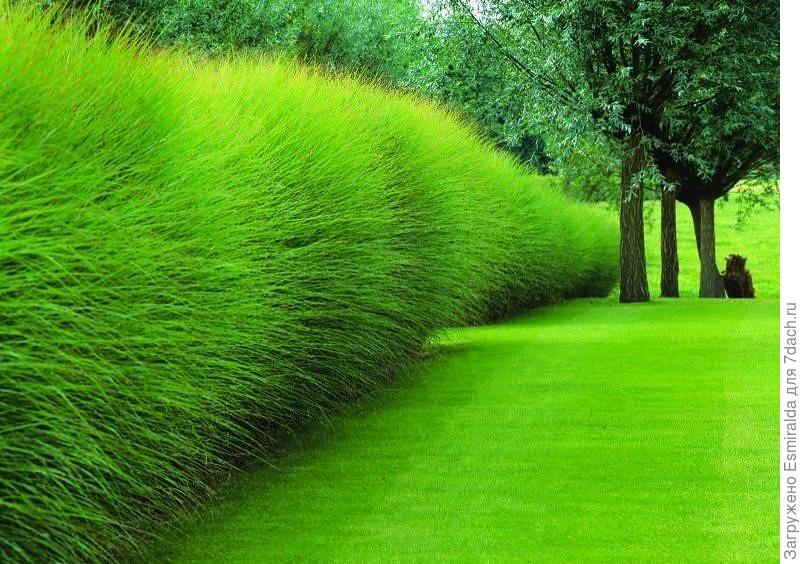
15. Camellia
Botanical Name: Camellia japonica
USDA Zones: 7-10
These flowering beauties can be used to make a formal or informal hedge. Prune the plant at a low or high level, depending upon your preference and needs.
16. Hydrangea
Botanical Name: Hydrangea macrophylla
USDA Zones: 3-8
Hydrangea can make for an excellent choice for a hedge plant with its different shape, size, bloom time, and color. They are great for the best show of flowers in summer.
Want to grow Hydrangea from cuttings? Click here17. Myrtifolia
architecturalplantsBotanical Name: Prunus lusitanica ‘Myrtifolia’
USDA Zones: 7-10
This species can form a bright hedge display mainly because of its glossy, small leaves in dark green color. It can grow well in dry soil and heat.
18. Common Hawthorn
shutterstock/Wiert nieumanBotanical Name: Crataegus monogyna
USDA Zones: 4-7
As the name indicates, Common Hawthorn is one of the best hedge plants.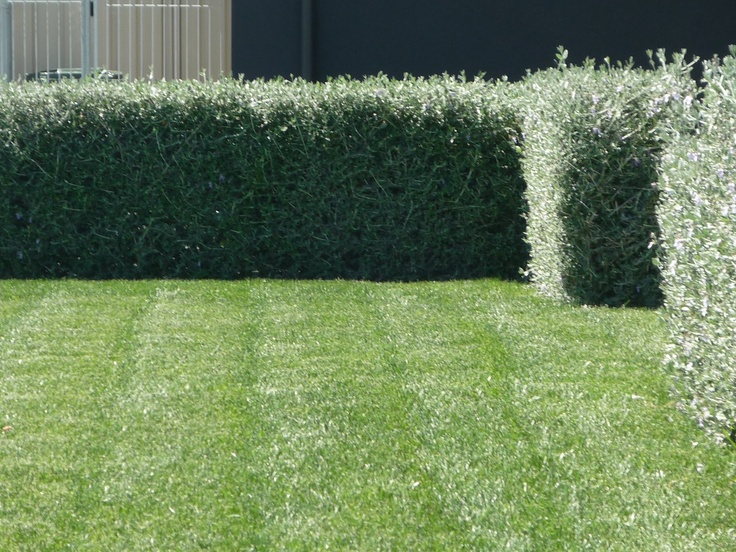 It is another fast grower with white flowers that bloom in May, followed by red berries.
It is another fast grower with white flowers that bloom in May, followed by red berries.
19. Ebbing’s Silverberry
Botanical Name: Elaeagnus x ebbingei
USDA Zones: 7-10
This plant is another fast-grower and could be handy in windy places. It also prefers all kinds of soil except shallow chalk ones and is great for pleaching.
20. Hedge Germander
Ley BaumschuleBotanical Name: Teucrium x lucidrys
USDA Zones: 7-9
This is an evergreen shrub that makes for another attractive hedge plant. Its pink flowers look striking against a lush dark, glossy green foliage.
Check out the best fast-growing privacy shrubs here21. Japanese Holly
Botanical Name: Ilex crenata
USDA Zones: 5-6
This hedge plant could be difficult to establish and even has a growing habit of going branched or upright. But the effort will be worth it as it looks quite good.
22. Beach Rose
Botanical Name: Rosa rugosa
USDA Zones: 2-8
This is a tough shrub that bears sweet-smelling flowers starting from June to August. It can make for an informal or formal deciduous hedge plant.
23. European Hornbeam
instanthedgeBotanical Name: Carpinus betulus
USDA Zones: 4-8
Another easy-to-grow and fast-growing specimen that can make for a formal hedge plant. It can tolerate sunlight, exposed areas, shade, and most kinds of soil.
24. Green Olive tree
Botanical Name: Phillyrea latifolia
USDA Zones: 7-9
The Green olive tree can be used as a great hedge plant with lush dark green leaves in a round shape. It is quite hardy and can even grow very well in containers.
25. European Beech
Botanical Name: Fagus sylvatica
USDA Zones: 4-7
This is another excellent choice for a formal hedge plant as it features leaves in shades of russet when planted as hedges.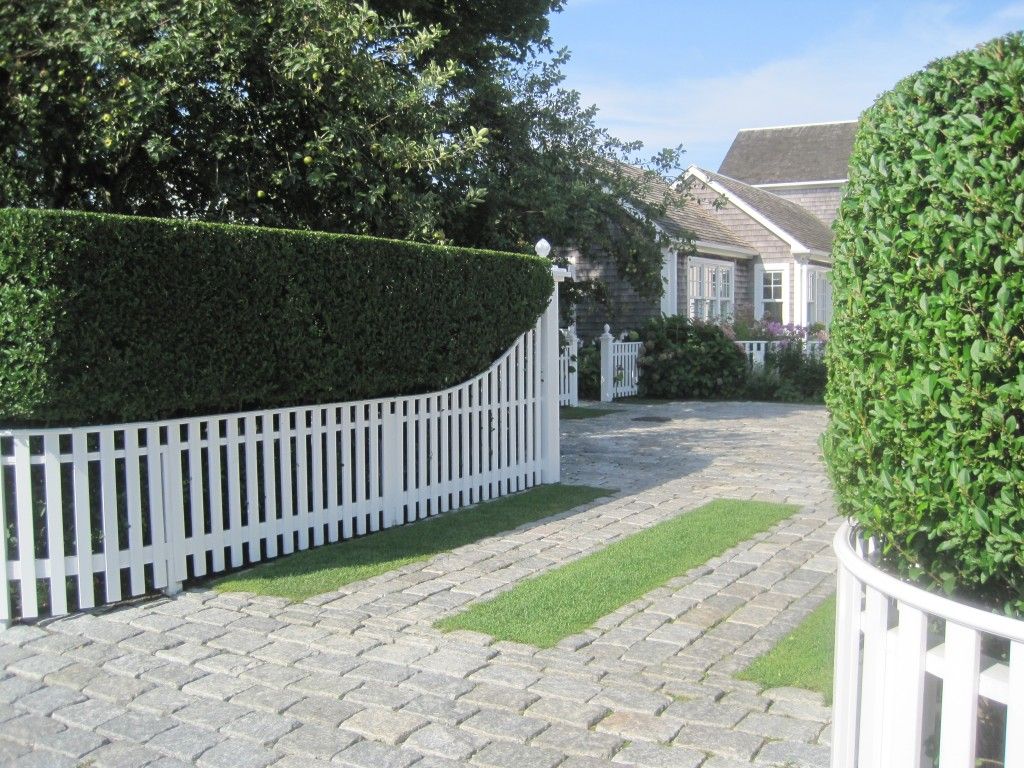
26. Cherry Laurel
Botanical Name: Prunus laurocerasus
USDA Zones: 6-8
Cherry Laurel is another fast-grower with a habit of spreading wide. With big green leaves, it prefers full sunlight and can tolerate drought-like situations.
27. Lavender
Botanical Name: Lavandula
USDA Zones: 5-9
Many cultivars of Lavandula can make for colorful, great hedge plants with fragrant flowers. This plant loves full sunlight and requires regular pruning.
Want to grow Lavender in pots? Click here28. Juneberry
Botanical Name: Amelanchier lamarckii
USDA Zones: 4-10
Juneberry is an attractive flowering tree that blossoms in spring with lush foliage that turns from a coppery-red shade in spring to green and then finally into fiery red during the fall.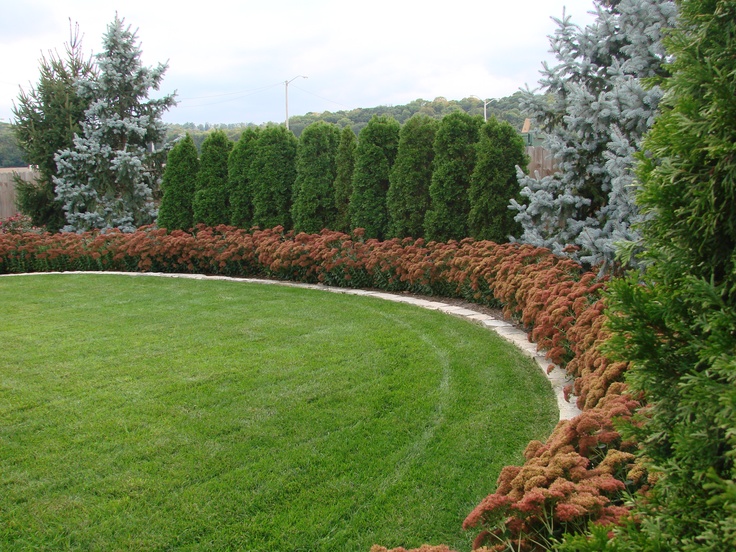
29. Hedge Maple
Botanical Name: Acer campestre
USDA Zones: 5-8
This maple plant with flowers is quite a trend amongst hedges and is another rapid grower. It can make a dramatic impact on your garden.
30. American Arborvitae
Botanical Name: Thuja occidentalis
USDA Zones: 3-8
This cultivar is popular for providing dense privacy. It is a common hedge plant due to its compact growth and upright, soft-textured foliage.
31. Sweet Mock Orange
nmbu.gardenexplorerBotanical Name: Philadelphus coronarius
USDA Zones: 4-8
Sweet Mock Orange is also referred to as English Dogwood. With beautiful white flowers and dark green foliage, it can fill any space with a sweet fragrance in summer.
Check out the best types of white flowers here32. Canadian Hemlock
plantsBotanical Name: Tsuga canadensis
USDA Zones: 3-7
These trees prefer shade and can also thrive well in full sunlight. Grow them in rows for a great privacy screen, thanks to their dense growth.
Grow them in rows for a great privacy screen, thanks to their dense growth.
33. Mountain Laurel
pixelsBotanical Name: Kalmia latifolia
USDA Zones: 4-9
Mountain Laurel is another evergreen broadleaf that makes for excellent hedges. The shrub also fills your garden with pink blooms from spring to summer.
34. Lilac
Botanical Name: Syringa vulgaris
USDA Zones: 3-7
This bush can be one of your best choices for the fragrance. Plant several Lilac plants in a line to make a hedge that will be full of blooms in no time!
35. Azaleas
Botanical Name: Rhododendron
USDA Zones: 5-9
As with privets, azaleas can be evergreen or deciduous, but their flowers are far superior to those that come in pink, orange, white, red, and yellow hues.
Find out the best shrubs for containers here36. Barberry Bush
ogarnijogrodBotanical Name: Berberis thunbergii
USDA Zones: 4-8
If you are looking for a hedge plant for security, you can pick Barberry Bushes because of its sharp thorns. With bright red berries in winter, the bushes can even look gorgeous in winter.
With bright red berries in winter, the bushes can even look gorgeous in winter.
37. Rose of Sharon
Botanical Name: Hibiscus syriacus
USDA Zones: 5-9
It is another common hedge plant that is valuable to many gardeners for its late-summer blooms. It continues to be colorful and alive even after most flowering plants have stopped blooming for the year.
Look at the best Hibiscus varieties here38. Yew Bush
a2oshopBotanical Name: Taxus
USDA Zones: 4-8
These needle-bearing evergreens are popular because of their tolerance towards the shade. They can also grow tall enough to act as privacy screens.
39. Forsythia
FlickrBotanical Name: Forsythia
USDA Zones: 6-8
You can choose this hedge plant for its flowers are one of the first to bloom in spring. It is low maintenance and doesn’t even require much pruning.
40. Privet
Shutterstock/Paul MaguireBotanical Name: Ligustrum
USDA Zones: 4-7
Privet hedges can be a spectacular addition to your garden. They grow without any fuss as they are quite invasive in nature.
41. Copper Leaf Plant
gardendrumBotanical Name: Acalypha wilkesiana
USDA Zones: 10-11
This semi-evergreen plant produces green, pink, yellow, copper, cream, and orange leaves in oval or heart shape. It is also popular as Jacob’s coat.
42. Golden Dewdrops
indiamartBotanical Name: Duranta erecta
USDA Zones: 10-11
With striking evergreen foliage, some varieties also feature variegated or gold leaves. In spring and summer, you can also find them in white, violet, or light blue blossom clusters.
Find out the best shrubs that bloom all year round here43. Hummingbird Bush
clickasnapBotanical Name: Hamelia patens
USDA Zones: 9-11
A deciduous shrub that reaches a height of 2 feet and spreads up to 3 feet wide, Hummingbird Bush looks stunning with bright tubular flowers on velvety gray-green foliage.
44. Red Tip Photinia
Botanical Name: Photinia × fraseri
USDA Zones: 7-9
Red Tip Photinia is an evergreen ornamental shrub that is noted for its attractive red and green foliage. The plant blooms with tiny white flowers.
45. Brazilian Spinach
plantexplorer.longwoodgardensBotanical Name: Alternanthera
USDA Zones: 10-12
A low-lying perennial that also serves as a nutritious leafy vegetable. It is consumed as a salad green or main course vegetable in many places.
46. Weeping Fig
shutterstock/Jiggo_Putter StudioBotanical Name: Ficus benjamina
USDA Zones: 10-12
The glossy pointed leaves on the arching branches make for a statement houseplant. The plant is also considered lucky as per the Feng Shui traditions.
Learn about Growing Weeping Fig here47. Herbst’s Bloodleaf
Botanical Name: Iresine herbstii
USDA Zones: 10-11
This ornamental hedge plant displays red leaves variegated with white and green markings and looks stunning on garden borders.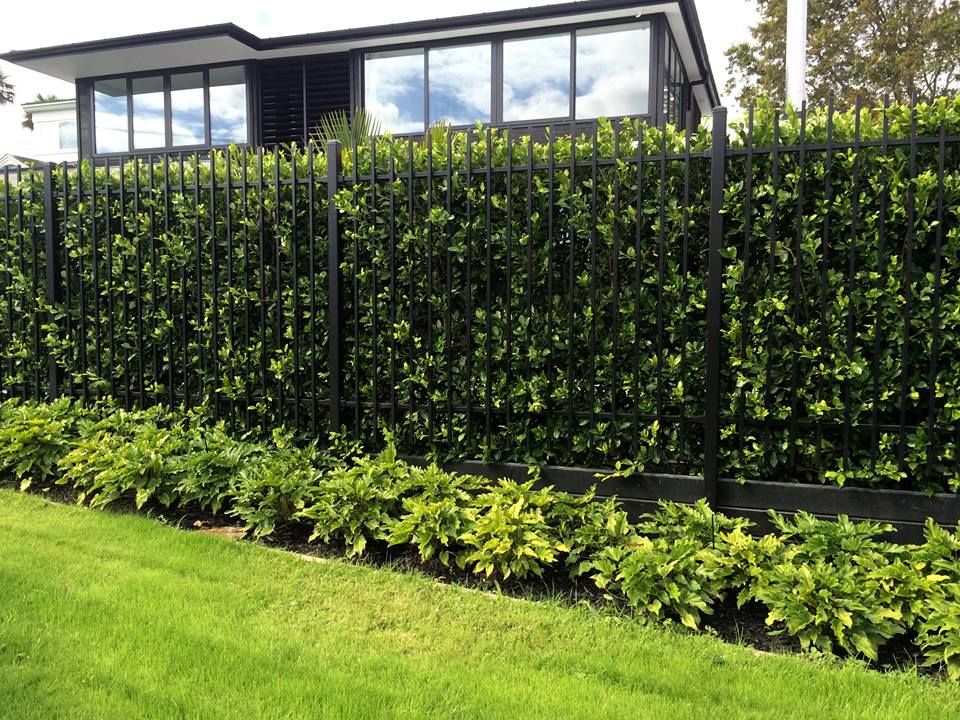
48. Lantana
Botanical Name: Lantana
USDA Zones: 7a-11b
Lantanas are popular as ground covers, and the colorful floral clusters add an extraordinary charm to the yard. The flowers bloom in pink, orange, red, yellow, and purple.
Want to Grow Lantanas? Click hereJoin our 2.8 Million Followers
Social Followers
2.5MFollowers
219kFans
36kSubscribers
YouTube
hedges. Ideas and options
Photo by the author.
How to make the site cozy and hide the rest corners from prying eyes? How to disguise an unsightly shed or a boring blank fence? How can you protect your favorite garden from strong winds or how to keep the snow around the rose garden? The simplest solution to such issues is the creation of hedges from ornamental plants.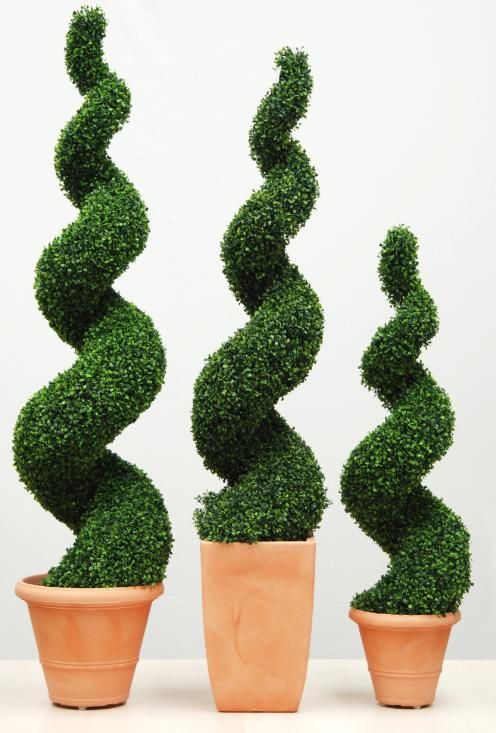 Hedges vary significantly in shape and height, can be multi-row and consist of one or more plant species. There are many ideas, but in this article I will talk about how in a short time I solved the problem of decorating and protecting the borders of the site using popular vines. In addition, I would like to offer several options for creating combined hedges and share my experience in caring for ornamental shrubs. nine0005
Hedges vary significantly in shape and height, can be multi-row and consist of one or more plant species. There are many ideas, but in this article I will talk about how in a short time I solved the problem of decorating and protecting the borders of the site using popular vines. In addition, I would like to offer several options for creating combined hedges and share my experience in caring for ornamental shrubs. nine0005
Express solution: decorative creepers
Our house is located on the outskirts of a small, quiet village with stunning views of the picturesque surroundings. The initial desire to maintain a sense of spaciousness and unity with the surrounding nature determined the decision to choose a metal mesh as a material for building a fence. However, from the side of the street, protection from road dust and long glances was required to control compliance with a strict village dress code. Opposite the house, along a low fence, two specimens of girlish grapes were planted, which in a few years turned the “transparent” fence into a reliable and beautiful wall.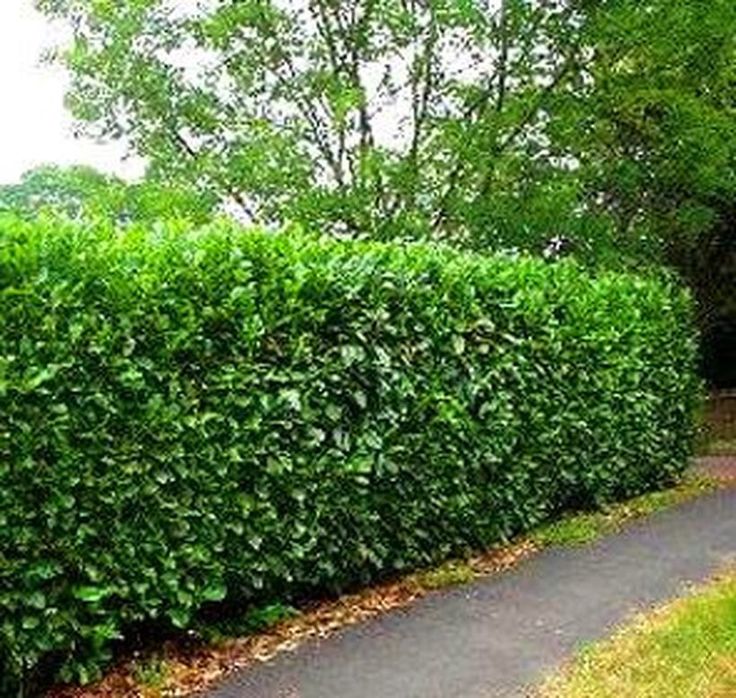 nine0005
nine0005
Parthenocissus quinquefolia is a great way to quickly decorate vertical surfaces in any material. This powerful perennial vine is super hardy and hardy, can grow in unfavorable soil conditions and is disease and pest resistant. Due to their rapid growth, adult girlish grapes can be called an aggressive plant, so restraining pruning is indispensable. A couple of times during the summer I have to shorten the regrown shoots, but I will never give up this wonderful plant for two reasons. Firstly, a dark green fence made of girlish grapes serves as an excellent backdrop for compositions from any plants. And secondly, in autumn the leaves of the grapes acquire a spectacular color and a large crimson-red wall becomes a bright decoration of our entire small street. nine0005
When creating hedges, other types of vines can be used for variety, such as winter-hardy Amur grapes ( Vitis amurensis ) or climbing honeysuckle varieties ( Lonicera caprifolium or L. periclymenum ). However, these plants are more demanding on soil moisture and fertility, so when planting it is better to fill the hole with a mixture of compost, garden soil and sand (1:3:1). During June flowering, honeysuckle is distinguished by the grace of flowers and candy-sweet aroma, so it can take its rightful place in the recreation area. When placing this creeper, it is necessary to provide the plant with good ventilation and lighting for 5-6 hours. To prevent powdery mildew in wet weather, I spray my honeysuckles with bio-fungicides (Fitosporin, Alirin, etc.). nine0005
periclymenum ). However, these plants are more demanding on soil moisture and fertility, so when planting it is better to fill the hole with a mixture of compost, garden soil and sand (1:3:1). During June flowering, honeysuckle is distinguished by the grace of flowers and candy-sweet aroma, so it can take its rightful place in the recreation area. When placing this creeper, it is necessary to provide the plant with good ventilation and lighting for 5-6 hours. To prevent powdery mildew in wet weather, I spray my honeysuckles with bio-fungicides (Fitosporin, Alirin, etc.). nine0005
For vertical gardening in express mode, the closest relatives of clematis - princes ( Atragene ) are perfect. These sprinter lianas have many advantages: they are unpretentious, do not need shelter and “cunning” pruning, bloom profusely in early summer with numerous flowers that turn into cute fluffy seed balls. When decorating a decorative wall in the courtyard, I tried to combine the varieties of princes with large-flowered clematis hybrids. The idea turned out to be successful - clematis blooming on the shoots of the current year against the backdrop of openwork foliage of princes look very attractive. For these vines to grow well, regular feeding and mulching with compost is shown to prevent overheating of the root system. Usually I apply a complex mineral fertilizer with trace elements and spray clematis twice in June with a water-soluble fertilizer with succinic acid. nine0005
The idea turned out to be successful - clematis blooming on the shoots of the current year against the backdrop of openwork foliage of princes look very attractive. For these vines to grow well, regular feeding and mulching with compost is shown to prevent overheating of the root system. Usually I apply a complex mineral fertilizer with trace elements and spray clematis twice in June with a water-soluble fertilizer with succinic acid. nine0005
All of the ornamental vines mentioned above can be planted near mesh fences, but not everyone will be comfortable near solid fences. "Universal Soldier" - girlish grapes grow well in the shade and in full sun, against a concrete wall or corrugated fence. Ornamental grapes can be placed at a distance of two or more meters between plants in a row. To help a young vine quickly decorate a vertical surface, you should use a coarse mesh of any material. The first two or three years after planting, it is advisable to tie up the growing shoots horizontally and pinch them for better branching. nine0005
nine0005
“Non-boring” bush hedge
The appearance of the fence on our site coincided with the beginning of my ardent passion for ornamental gardening. The long “border” strip has become a place for testing and placing a small collection of various species and varieties of ornamental deciduous and flowering shrubs. For more than twenty years, an original hedge has been formed from plants with a variety of foliage colors, which is essentially a single-row mixborder. A combined hedge on a spacious plot looks natural, harmonizes with the surrounding landscape and is an unusual backdrop for fruit and berry crops. In keeping with the established tradition of naming zones in our area with “loud” names, I call this place the “Uffizi Gallery” for its richness of color and constantly changing “exposition” throughout the season. nine0005
Many types of plants are suitable for creating a “non-boring” free-growing hedge. When choosing, one should take into account the requirements of a particular plant for lighting, soil conditions and, of course, the habitus of an adult specimen.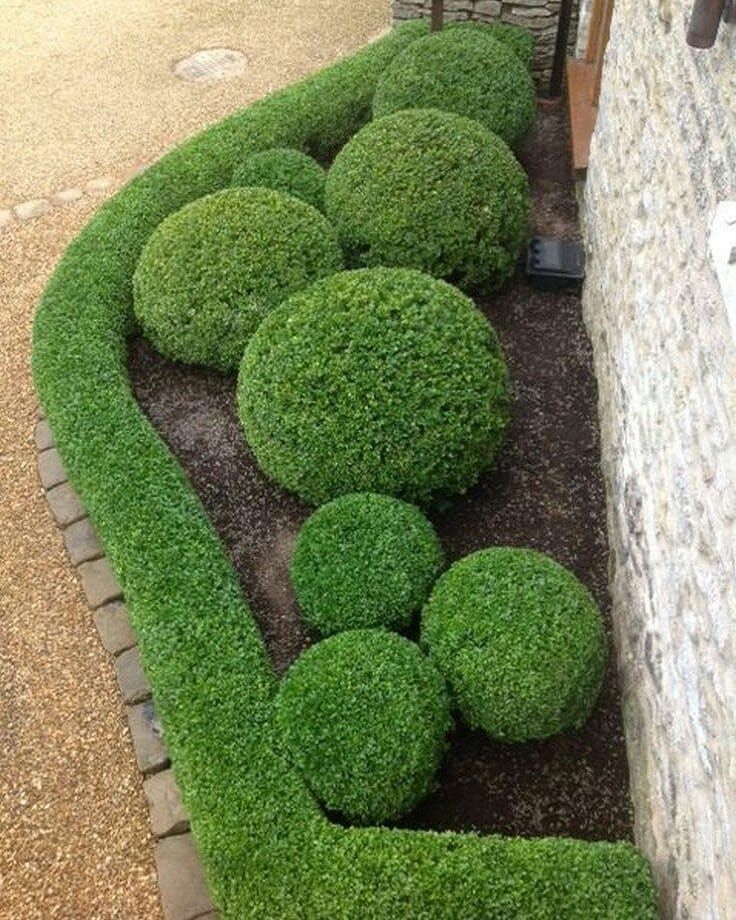 A translucent mesh fence allows you to plant any variegated varieties of shrubs, which only with sufficient lighting can manifest themselves in all their glory. However, when planning landings, it is better to avoid excessive “variegation” and try to select successful color combinations. The basis of the combined hedges are green-leaved shrubs, with which you can combine the brightest colors, give the composition a special rhythm and give it the charm of simplicity and naturalness. The beauty is also that, if desired, you can change the shape of green-leaved shrubs with the help of pruning and thereby change the general appearance of the site. nine0005
A translucent mesh fence allows you to plant any variegated varieties of shrubs, which only with sufficient lighting can manifest themselves in all their glory. However, when planning landings, it is better to avoid excessive “variegation” and try to select successful color combinations. The basis of the combined hedges are green-leaved shrubs, with which you can combine the brightest colors, give the composition a special rhythm and give it the charm of simplicity and naturalness. The beauty is also that, if desired, you can change the shape of green-leaved shrubs with the help of pruning and thereby change the general appearance of the site. nine0005
Traditional shrubs for hedges
An ideal hedge replaces a blank fence in its intended purpose, but it performs not only enclosing and camouflage functions, but also serves as protection from noise, wind and dust. Due to their dense dense crown and the presence of thorns, hawthorn and barberry are the most popular shrubs for creating impenetrable and reliable living walls. Most of the zoned species and varieties of hawthorn are tall shrubs that are unpretentious to soil conditions and bloom and bear fruit in good light. For planting a compact two-meter hedge, a single-petal hawthorn is perfect ( Crataegus monogyna ), soft ( C. submollis ) and common ( C. laevigata ). All these species and their cultivars are characterized by active shoot formation and, with regular shearing, grow a very dense crown. Hawthorn fruits are not only decorative, but also have healing properties. True, in order to get a crop, you will have to wait, since the hawthorn usually begins to bear fruit 6–8 years after planting.
Most of the zoned species and varieties of hawthorn are tall shrubs that are unpretentious to soil conditions and bloom and bear fruit in good light. For planting a compact two-meter hedge, a single-petal hawthorn is perfect ( Crataegus monogyna ), soft ( C. submollis ) and common ( C. laevigata ). All these species and their cultivars are characterized by active shoot formation and, with regular shearing, grow a very dense crown. Hawthorn fruits are not only decorative, but also have healing properties. True, in order to get a crop, you will have to wait, since the hawthorn usually begins to bear fruit 6–8 years after planting.
Common barberry ( Berberis vulgaris ) and hybrid Ottawa barberry ( B. x ottawensis ) are highly ornamental unpretentious two-meter shrubs that are constantly in demand among gardeners. Barberries are winter-hardy, undemanding to the soil, but grow best on light loam with good drainage. My combination hedge includes two varieties of Ottawa barberry: red-purple "Superba" ("Superba") and handsome "Silver Miles" ("Silver Maelz") with silver-white strokes and specks on maroon-red leaves. All barberries tolerate pruning well. But they are especially good as part of a landscape-style mixborder, when their arched shoots are decorated with bright orange-red fruits. nine0005
All barberries tolerate pruning well. But they are especially good as part of a landscape-style mixborder, when their arched shoots are decorated with bright orange-red fruits. nine0005
One of the first shrubs I planted along the fence was a yellow acacia or tree caragana ( Caragana arborescens ). In our village, the yellow locust is traditionally used to fence patios and apiaries. Karagana is an excellent honey plant, it is drought-resistant and undemanding, grows well on alkaline soils and is able to recover quickly after radical pruning. To create a dense hedge, yellow acacia is planted at a distance of 35–60 centimeters between plants. And with a great need for planting material, it can be easily propagated by layering and cuttings. nine0005
It is always interesting for me to use ordinary “wild plants” in compositions with popular ornamental deciduous shrubs. So, for example, having planted Tatar honeysuckle, which is widespread in our area, as part of a mixborder, I discovered a universal plant that is also suitable for planting a hedge.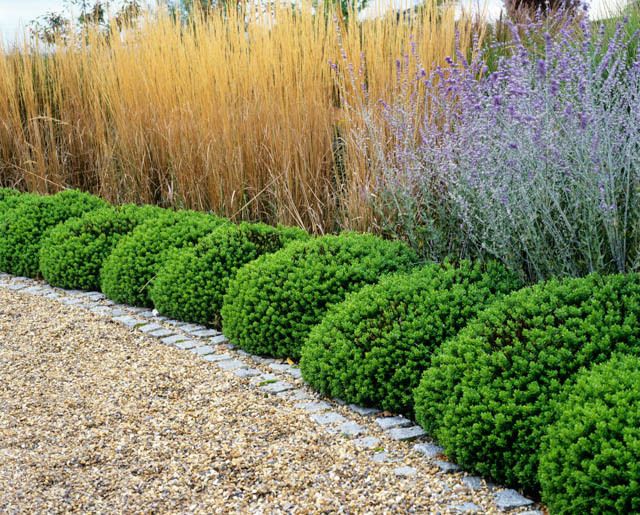 Tatar honeysuckle ( Lonicera tatarica ) is highly resistant to adverse factors: it is drought-resistant, tolerates waterlogging and salinization of the soil, and can grow in partial shade. The crown of the Tatar honeysuckle is quite dense and with minimal pruning, you can easily maintain a neat trapezoid shape. During flowering, this "simple" turns into an exotic "diva" thanks to unusual flowers in inflorescences. There are several varieties of Tatar honeysuckle, differing in the habit of the bushes, the size of the leaves and the color of the flowers. nine0081 Caragana and honeysuckle in wet weather can be affected by fungal diseases, but preventive treatments with fungicides from mid-June help to avoid leaf damage.
Tatar honeysuckle ( Lonicera tatarica ) is highly resistant to adverse factors: it is drought-resistant, tolerates waterlogging and salinization of the soil, and can grow in partial shade. The crown of the Tatar honeysuckle is quite dense and with minimal pruning, you can easily maintain a neat trapezoid shape. During flowering, this "simple" turns into an exotic "diva" thanks to unusual flowers in inflorescences. There are several varieties of Tatar honeysuckle, differing in the habit of the bushes, the size of the leaves and the color of the flowers. nine0081 Caragana and honeysuckle in wet weather can be affected by fungal diseases, but preventive treatments with fungicides from mid-June help to avoid leaf damage.
Powdery mildew resistant golden currant ( Ribes aureum ) is a hardy, drought-resistant shrub up to two meters tall. Openwork small leaves of golden currant are similar to gooseberry leaves, numerous berries taste like blueberries and, depending on the variety, are orange or cherry-black.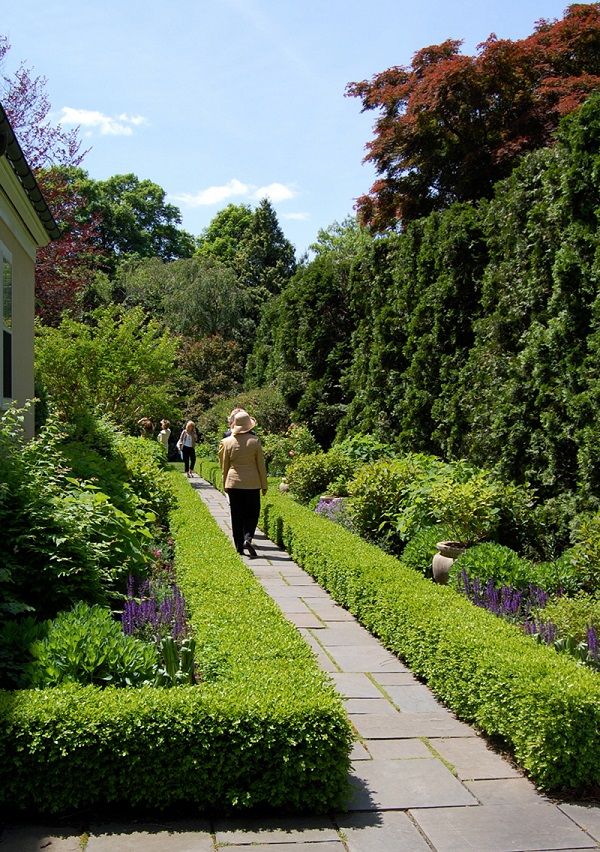 Golden currants are especially attractive during flowering, when the bush is covered with lovely yellow flowers with a strong sweet aroma. This relative of the common currant is a valuable plant for creating very dense honey-bearing hedges. For pollination, you need to plant several copies of different varieties and do not cut the bush too much if you want to get berries. nine0005
Golden currants are especially attractive during flowering, when the bush is covered with lovely yellow flowers with a strong sweet aroma. This relative of the common currant is a valuable plant for creating very dense honey-bearing hedges. For pollination, you need to plant several copies of different varieties and do not cut the bush too much if you want to get berries. nine0005
Cotoneaster lucidus ( Cotoneaster lucidus ) is a plant without faults, ideal for medium height hedges and borders. This type of cotoneaster looks flawless all season: glossy leaves of the correct form, graceful small flowers, pretty black berries and original bright autumn color. The advantage of cotoneaster is not only a high shoot-forming ability, but also shade tolerance, so that the bush does not become bare from below. The popularity of this plant in urban gardening proves its unpretentiousness and ability to adapt to any conditions, although cotoneaster prefers loose, fertile soil and a sunny place.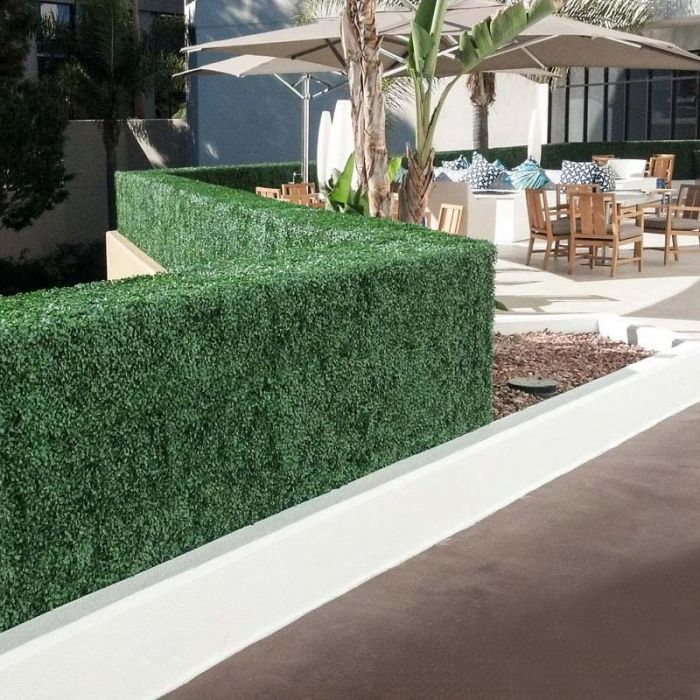 nine0005
nine0005
Bright accents of variegated and ornamental flowering shrubs
Before talking about my variegated shrubs, I would like to share my impressions of one plant, which I met several years ago. This wonderful shrub is not found in our area, called by geographers “meadow steppe”, but I acquired it, as they say, “for the collection”. Winged euonymus ( Euonymus alatus ) with unusual tetrahedral shoots, after landing in calcareous black soil, quickly began to grow and at first seemed a modest “extra” in the hedge. However, in the autumn a small miracle happened - the euonymus “changed clothes” into the brightest pink-crimson “outfit”, which I had not seen before. Now three varietal spindle trees grow in my garden, which in October turn into a magnificent decoration of the entire site. nine0005
Of the variegated shrubs in light colors, which will successfully fit into the landscape hedge, white sod ( Cornus alba ) is worth noting. There are a lot of varieties of white derain, but I want to highlight “Elegantissima” (“Elegantissima”), “Sibirica Variegata” (“Sibirica Variegata”), “Ivory Halo” (“Ivory Halo”) with light green leaves with a creamy white border, as well as a compact “Cream Cracker” (“Cream Cracker”).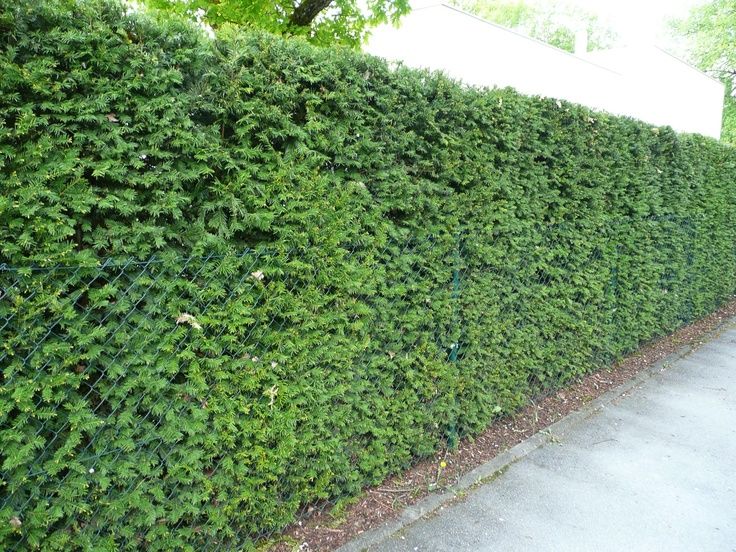 My favorite varieties are the yellow-leafed "Aurea" ("Aurea") and the green-golden "Gouchaultii" ("Gusholti"), and also the bright "Spaethii" ("Shpeti") with light green leaves with an uneven yellow border on young growths. To dilute this motley “company”, you can use the green-leaved turf “Baton Rouge” (“Baton Rouge”) or the elegant “Kesselringii” (“Kesselrings”) with wine-black bark on young shoots. The color of the shoots of white deren is a separate “song”, which is especially impressive in winter, when bright shades are unusually good on a snow-white background. At this time, red turf does not lag behind in terms of decorativeness ( C. sanguinea ), whose yellow shoots are decorated with an orange-red blush, or offspring derain ( C. sericea ) “Flaviramea” (“Flavirameya”) with mustard-green branches. All of these types of turf prefer moist, humus-rich soils, while variegated varieties require a sunny location.
My favorite varieties are the yellow-leafed "Aurea" ("Aurea") and the green-golden "Gouchaultii" ("Gusholti"), and also the bright "Spaethii" ("Shpeti") with light green leaves with an uneven yellow border on young growths. To dilute this motley “company”, you can use the green-leaved turf “Baton Rouge” (“Baton Rouge”) or the elegant “Kesselringii” (“Kesselrings”) with wine-black bark on young shoots. The color of the shoots of white deren is a separate “song”, which is especially impressive in winter, when bright shades are unusually good on a snow-white background. At this time, red turf does not lag behind in terms of decorativeness ( C. sanguinea ), whose yellow shoots are decorated with an orange-red blush, or offspring derain ( C. sericea ) “Flaviramea” (“Flavirameya”) with mustard-green branches. All of these types of turf prefer moist, humus-rich soils, while variegated varieties require a sunny location.
The fast-growing and unpretentious califolia vesicle has long been loved by gardeners, and its red and variegated varieties are now at the peak of garden fashion.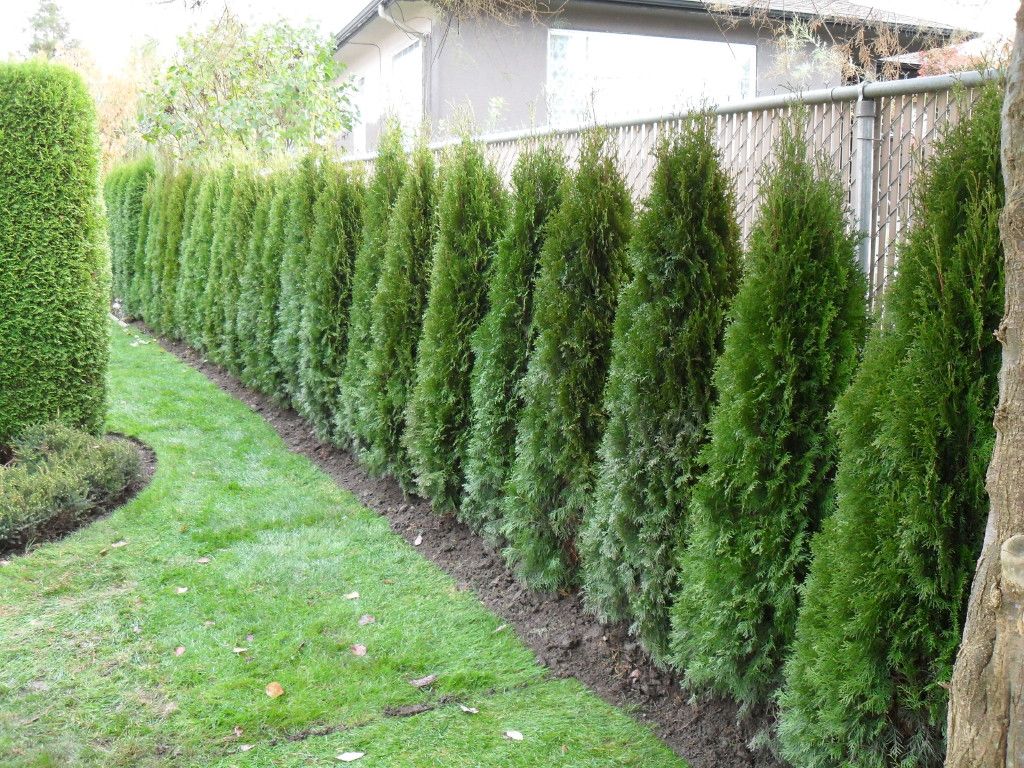 The species plant Physocarpus opulifolius is widely used to create wind and snow protection strips along roads or to strengthen slopes. I dug up my first vesicle seedling in the nearest forest plantation from the village. The species plant is a three-meter shrub with large light green matte leaves next to which the yellow-leaved varieties of the vesicle "Luteus" ("Luteus"), "Dart's Gold" ("Darts Gold") or "Nugget" ("Nugget") look most advantageous . In full sun, the foliage of these varieties gradually burns out and the leaves that glowed bright yellow in May become golden-light green. The recently emerged mid-sized variety "Golden Anny" ("Golden Annie") practically does not fade and stands out with elegant marbled green-yellow foliage. nine0005
The species plant Physocarpus opulifolius is widely used to create wind and snow protection strips along roads or to strengthen slopes. I dug up my first vesicle seedling in the nearest forest plantation from the village. The species plant is a three-meter shrub with large light green matte leaves next to which the yellow-leaved varieties of the vesicle "Luteus" ("Luteus"), "Dart's Gold" ("Darts Gold") or "Nugget" ("Nugget") look most advantageous . In full sun, the foliage of these varieties gradually burns out and the leaves that glowed bright yellow in May become golden-light green. The recently emerged mid-sized variety "Golden Anny" ("Golden Annie") practically does not fade and stands out with elegant marbled green-yellow foliage. nine0005
It is known that the dark color visually distances the object, so purple-red vesicles give the compositions depth and expressiveness. My old-timer vesicles were purchased without a cultivar, but I guess they are the popular black and purple Diabolo, green and burgundy Summer Wine, and wine red purple Red. Baron” (“Red Baron”). Until recently, my favorite variety was "Diable d'Or" ("Diabl Dor") with shiny orange-scarlet young leaves, decorated with burgundy edging. Now my favorite is the vesicle "Chameleon" ("Chameleon") with a complex contrasting color of medium-sized foliage, which is not possible to describe briefly. This variety can rightfully be called unique, as the color of its foliage changes throughout the season. "Chameleon" deserves a front seat in a flower garden or mixborder. nine0005
Baron” (“Red Baron”). Until recently, my favorite variety was "Diable d'Or" ("Diabl Dor") with shiny orange-scarlet young leaves, decorated with burgundy edging. Now my favorite is the vesicle "Chameleon" ("Chameleon") with a complex contrasting color of medium-sized foliage, which is not possible to describe briefly. This variety can rightfully be called unique, as the color of its foliage changes throughout the season. "Chameleon" deserves a front seat in a flower garden or mixborder. nine0005
Dark-leaved vesicles only show their high decorative qualities to the full extent in sufficient light, and for best growth they need fertile, well-drained soil. Caring for vesicles, however, as for all the shrubs described above, is very simple and does not require special knowledge and experience: applying complex spring fertilizer at the beginning of the growing season, weeding and loosening after rains, preventive treatments against insect pests, mulching in the fall with any organic material (peat, compost, foliage, cut grass).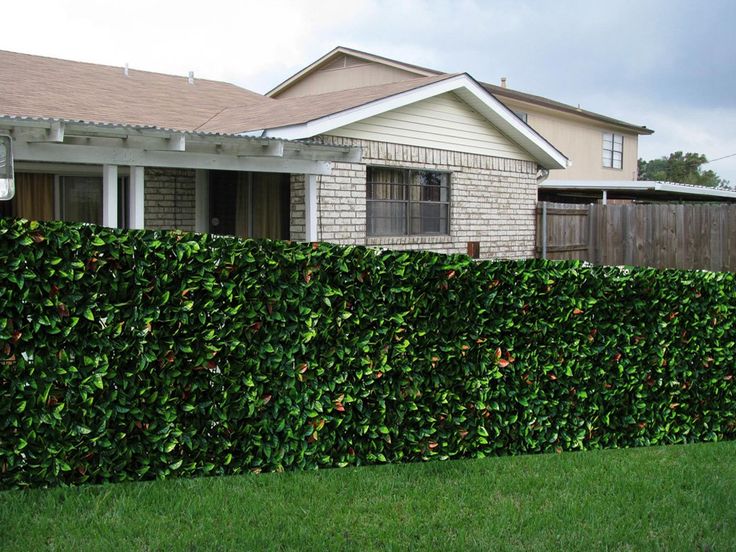 If you want to give the shrubs a neat shape, I carry out a formative pruning in June, and if a rejuvenating pruning is required, then the best time to work is the end of October or March. nine0005
If you want to give the shrubs a neat shape, I carry out a formative pruning in June, and if a rejuvenating pruning is required, then the best time to work is the end of October or March. nine0005
A number of ornamental flowering shrubs are used as companion plants for vesicles. As part of a hedge, medium-sized varieties of mock oranges with a dense crown, small foliage and abundant flowering are always appropriate. Mock oranges are versatile and unpretentious “decorators”. In any combination with their help, it is easy to neutralize too bright colors or, conversely, focus on expressive colors. For example, next to the red-leaved hazel, the mock orange variety “Aureus” (“Aureus”) looks much more interesting. You can also use various types of spirea: willow, gray, Vangutta, Thunberg or Douglas spirea. True, when choosing a spirea, one must take into account the fact that many species give a large number of shoots, which means they require either a spacious place or work to limit growth in breadth.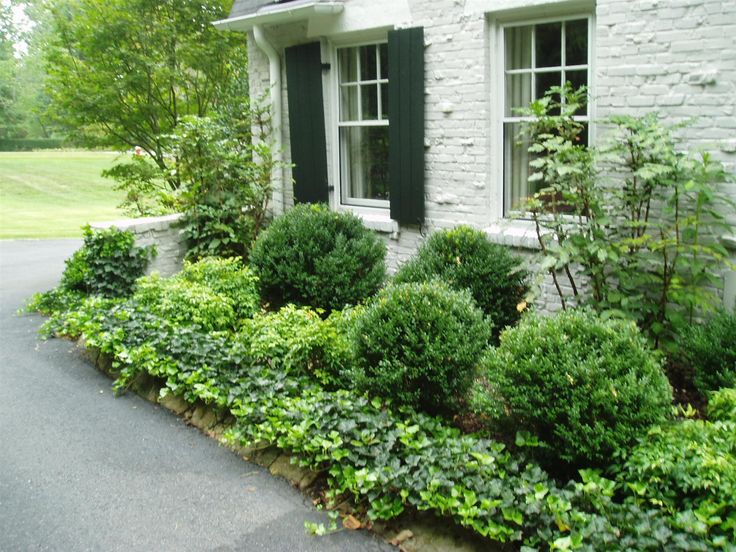 nine0005
nine0005
The lilac, the “Queen of the May Garden”, can also be given a place of honor in the combination hedge located in a sunny area. To restrain the growth and formation of a dense crown of the common lilac, certain pruning skills and experience are required. Therefore, it is worth paying attention to the Preston lilac varieties ( Syringa x prestoniae ), obtained by crossing drooping and hairy lilacs ( S. reflexa x S. villosa ). Lilac varieties Preston bloom in late May, branch well, have beautiful elongated leaves and a compact crown, and can also tolerate slightly acidic soils. The variety "Miss Canada" ("Miss Canada") is a real gem in my garden, blooming with amazing bright pink longline inflorescences. nine0005
In this article, I have listed common and affordable shrubs and vines with which you can create beautiful borders or reliable hedges. My goal is to show that the most simple and familiar shrubs in original combinations or after formative pruning can look spectacular and outstanding.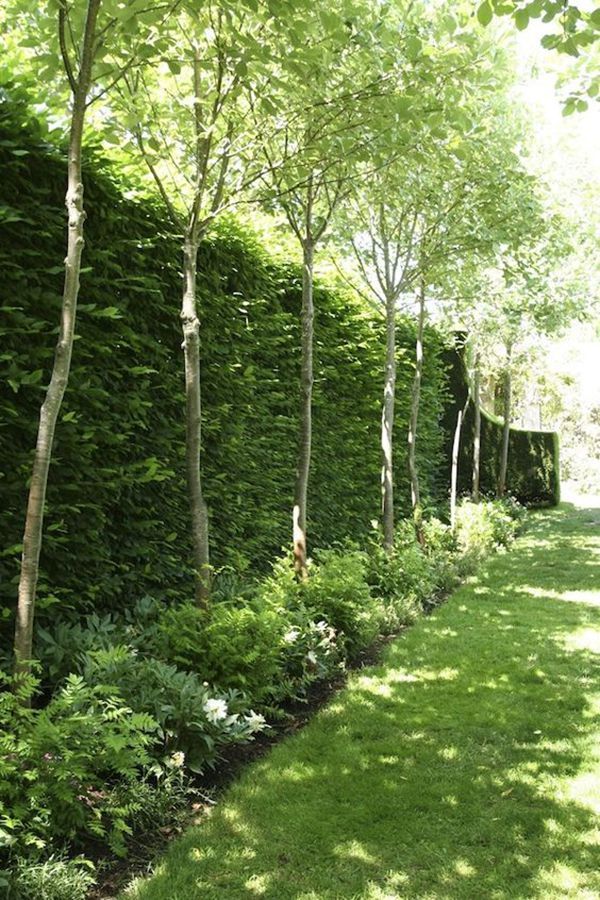 There are a lot of options, you just have to discard the stereotypes and show your imagination!
There are a lot of options, you just have to discard the stereotypes and show your imagination!
Subscribe to our newsletter to be the first to know about new articles and promotions! nine0004
Top 15 best hedge plants
💣💣💣 BLACK FRIDAY IN GARSHINKA !
Published:
4 years ago
387 556
1 comment
We present to your attention a selection of the best plants in our opinion for creating a living fence on your site.
| 1. Thuja. Evergreen tree or shrub. In the conditions of the middle lane, it can reach a height of 3 m. It is widely used to create hedges. The optimal planting distance is 80-100 cm. It can be planted in two rows in a checkerboard pattern. In a temperate climate, among the various forms of thuja, the western thuja "Smaragd" and "Emerald" feel best. Among other plants used to create hedges, thuja has its advantages and disadvantages | |
| Advantages:
Drawbacks: The disadvantages of thuja include its burnout in the bright sun, while the needles lose their decorative effect and become brown. nine0005 | |
| 2. Juniper. Common, Cossack, virgin, scaly, and Chinese junipers are used to create hedges. All of them have their own characteristics, but their main advantages are the same: | |
Of the shortcomings of juniper, one can single out its need for good lighting. |
|
| 3. Berry yew. Evergreen coniferous plant. Great for creating a living fence and for good reason: | |
The yew has one drawback - all its parts are poisonous. |
|
| 4. Lawson's cypress is one of the most beautiful coniferous plants. | |
| Advantages:
Disadvantages: prefers well-lit areas (goes bald in the shade), requires regular watering and spraying. nine0005 |
|
| 5. Derain white. A fast-growing deciduous shrub up to 3 m high. Very beautiful, retains its decorative effect even in winter, thanks to bright red shoots. Blossoms twice a season, in the fall, along with young flowers, rounded white berries appear. The shrub has many advantages , among which: | |
Perhaps the only feature of turf that can be called its disadvantage is the need for regular cutting. If this condition is not observed, the bush is exposed in the lower part, it looks sloppy. nine0005 |
|
| 6. Viburnum vesicle. Spectacular shrub with spreading drooping branches and large ornamental leaves. It reaches a height of 3 m. With proper care, a vesicle hedge will become a real highlight of your garden. | |
| Advantages:
has no defects. |
|
| 7. Crown mock orange A beautifully flowering fragrant shrub up to 3 m high. It is frost-resistant and unpretentious, excellent for the conditions of the middle lane. In addition to the already listed advantages of mock orange, the following should be noted: | |
The plant does not have any significant drawbacks, it should only be noted that well-lit places should be chosen for planting mock orange, and the soil should not be compacted and waterlogged. nine0005 |
|
| 8. |
- Lush, graceful blooms.
- Handles shearing well.
- Able to take various forms.
- By combining varieties with different flowering times, you can create a continuously flowering hedge. nine0187
- A wide range of varieties with different colors of inflorescences.
- Undemanding to soils
To maintain a neat appearance of the shrub, it is recommended to trim the faded buds.
| 9. Thunberg barberry. Great for hedges because it: | |
The plant has its own disadvantages . For example, the presence of long sharp spines complicates the care of the shrub. With a lack of sunlight, the decorative effect of the leaves is lost. The plant propagates easily and appears where its growth is undesirable. |
|
| 10. Privet. Fast-growing, shade-tolerant shrub up to 2-2.5 m high. The plant deserves special attention for the following reasons: | |
The only drawback of privet is poisonous fruit. | nine0002 |
| 11. Cotoneaster brilliant. Densely leafy deciduous shrub up to 0.5 to 1.5 meters high. Undoubted Benefits of Cotoneaster: | |
Cotoneaster branches are fairly fast growing so regular pruning is essential to keep the shrub shaped and attractive. |
|
| 12. Blood red hawthorn. Unpretentious deciduous shrub, characterized by high longevity. | |
Irregular shearing of hawthorn can expose the underside of the bush. | nine0002 |
| 13. Lilac. Very ornamental flowering shrub. To create a hedge, the use of undemanding, frost-resistant, drought-resistant varieties, such as Meyer, Amur and Hungarian lilacs, is recommended. The advantage of lilac over other shrubs is as follows: | |
disadvantages of lilacs include the need for annual cutting of root shoots; a short flowering period, after which the decorativeness of the plant is significantly reduced. |
|
| nine0002 14. Shrub cinquefoil. A very decorative compact shrub that blooms from early summer to autumn. The main advantages of the plant: | |
Every 4-5 years the plant needs a rejuvenating pruning. Requires watering during dry periods. nine0005 |
|
| 15. | |
At the same time, hydrangea is quite capricious, requires frequent watering, needs shelter for the winter, and is demanding on the composition of the soil. The plant needs pruning, since flowering occurs only on the shoots of the current year. |
|
Was this article helpful to you? Share it with your friends and get bonuses for activity
nine0 shared
138 shared
Similar articles
Heal everyone, heal: remedies for the health of garden plants
For full-fledged care of the garden, it may be necessary to use only mineral and organic fertilizers. Keeping plants healthy requires many important preparations, some of which are specifically designed to control pests and diseases, and some are the usual components of a home first aid kit. nine0005
Keeping plants healthy requires many important preparations, some of which are specifically designed to control pests and diseases, and some are the usual components of a home first aid kit. nine0005
1 year ago
1 comment
Faster, brighter, earlier: the top ten primroses for the garden
There is a considerable number of primroses that can completely transform the awakening spring garden. Different cultures require different efforts from the gardener to care for them: some primroses need annual digging and transplanting, others can fully develop without transplanting for several years. Each gardener chooses primroses for his garden according to his own taste or fashion trends. nine0005
1 year ago
2 comments
Beauty Has a Name: David Austin's English Roses
Modern grades of the best English roses are created in the nursery of David Austin who managed to create such roses which combine a noble form of ancient flowers and a possibility of a repeated flowering.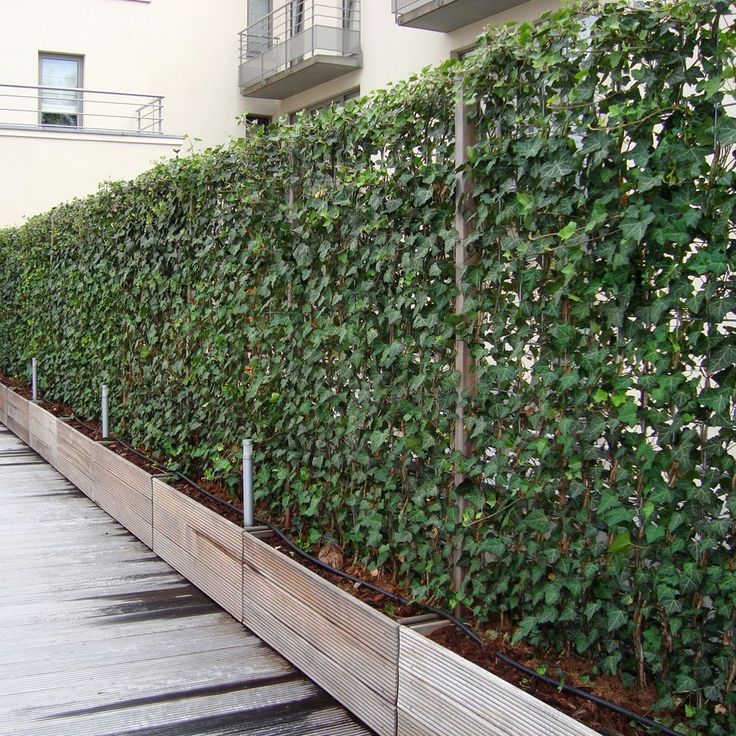 In addition, David Austin roses are distinguished by well-formed immunity, various bush habits and leaf color, and a rich palette of aromas. nine0005
In addition, David Austin roses are distinguished by well-formed immunity, various bush habits and leaf color, and a rich palette of aromas. nine0005
1 year ago
0 comments
The Magnificent Ten: The Tools You Need for Gardening
There is no single strict list of tools needed for gardening: each gardener has his own individual preferences, dictating the purchase of the right garden equipment. However, each personal list of tools has its own basis, without which the formation of a garden and competent care for it is unthinkable. nine0005
1 year ago
0 comments
The retinue plays queens: the best options for companions for roses
No matter how beautiful and luxurious roses are, their unique beauty can be fully revealed not only in the case of creating monoplants, but also when other garden plants are planted next to them.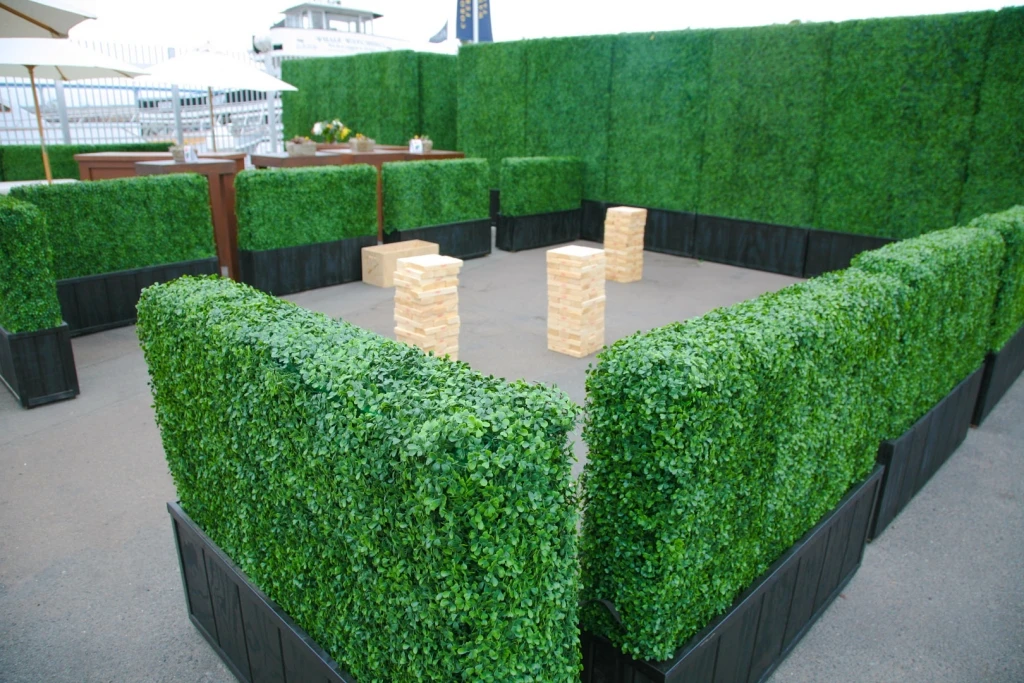
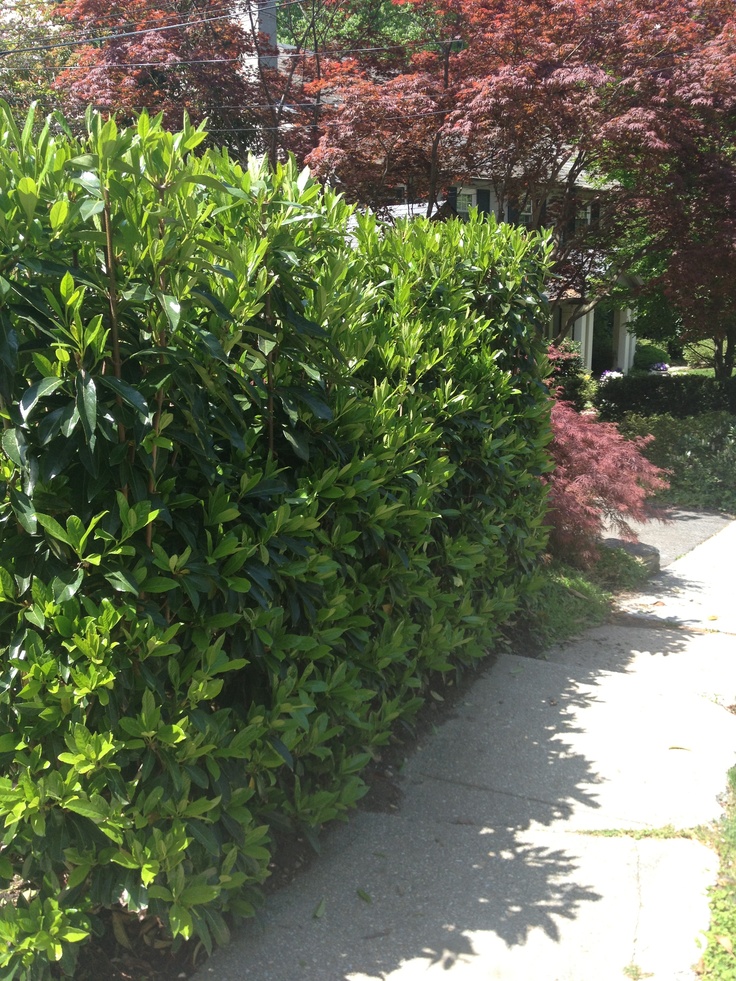 Not demanding on lighting, frost and heat resistant, feels good in urban environments.
Not demanding on lighting, frost and heat resistant, feels good in urban environments. 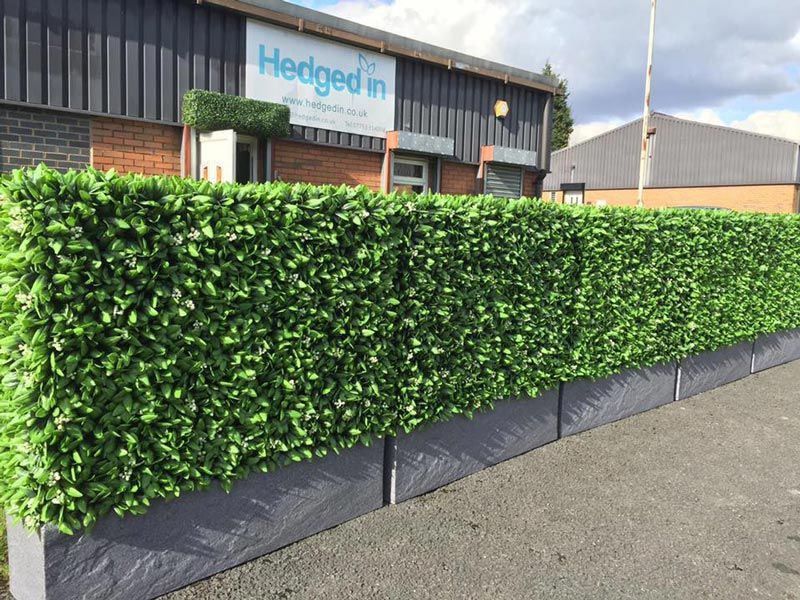 Otherwise, the bushes become loose and lose their decorative effect. Like all conifers, juniper has a rather slow growth, although this is a minus or plus for a hedge - a moot point.
Otherwise, the bushes become loose and lose their decorative effect. Like all conifers, juniper has a rather slow growth, although this is a minus or plus for a hedge - a moot point. 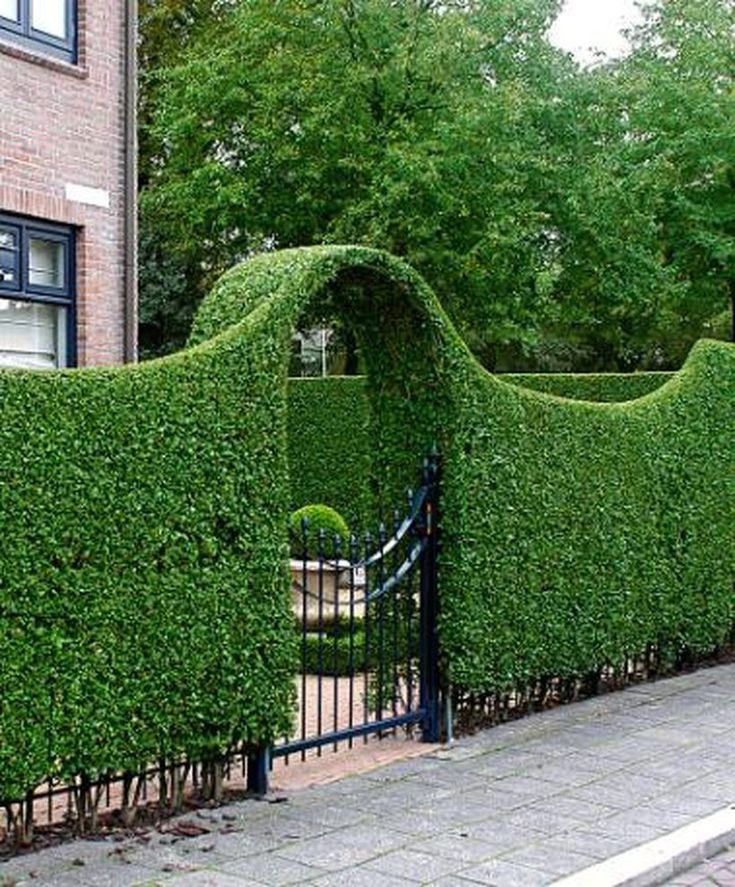
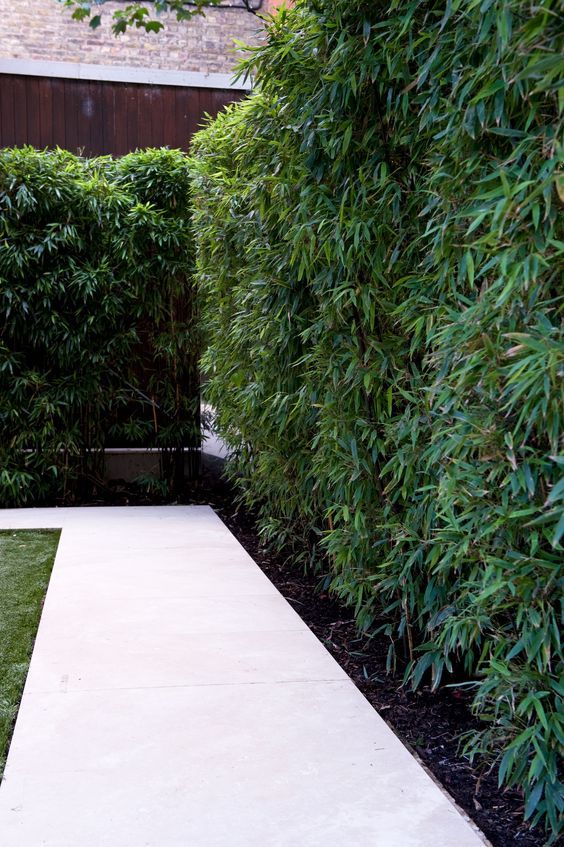
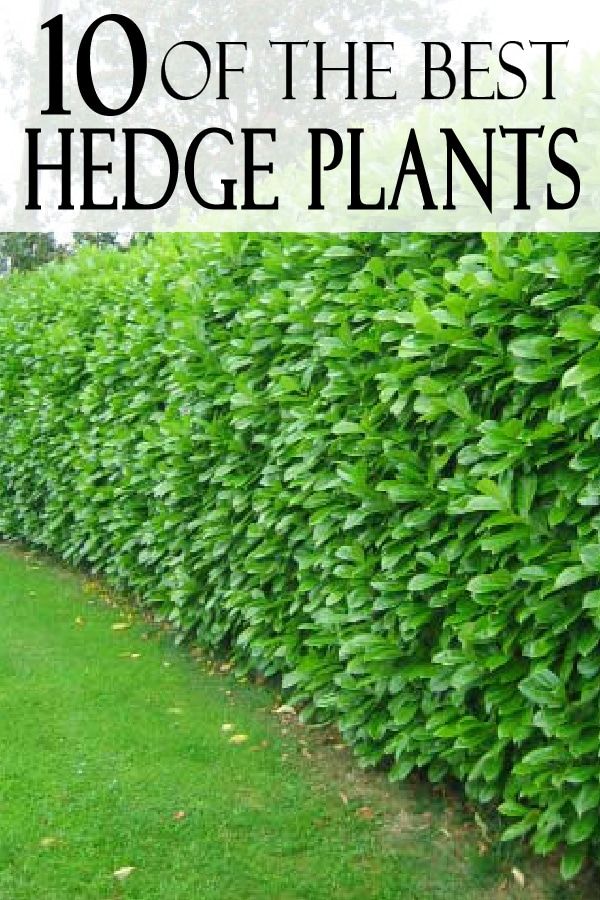
 Spirea. A very ornamental shrub with beautiful abundant flowers. A spirea hedge can reach a height of 1.5 m. The plant has many advantages, including:
Spirea. A very ornamental shrub with beautiful abundant flowers. A spirea hedge can reach a height of 1.5 m. The plant has many advantages, including: 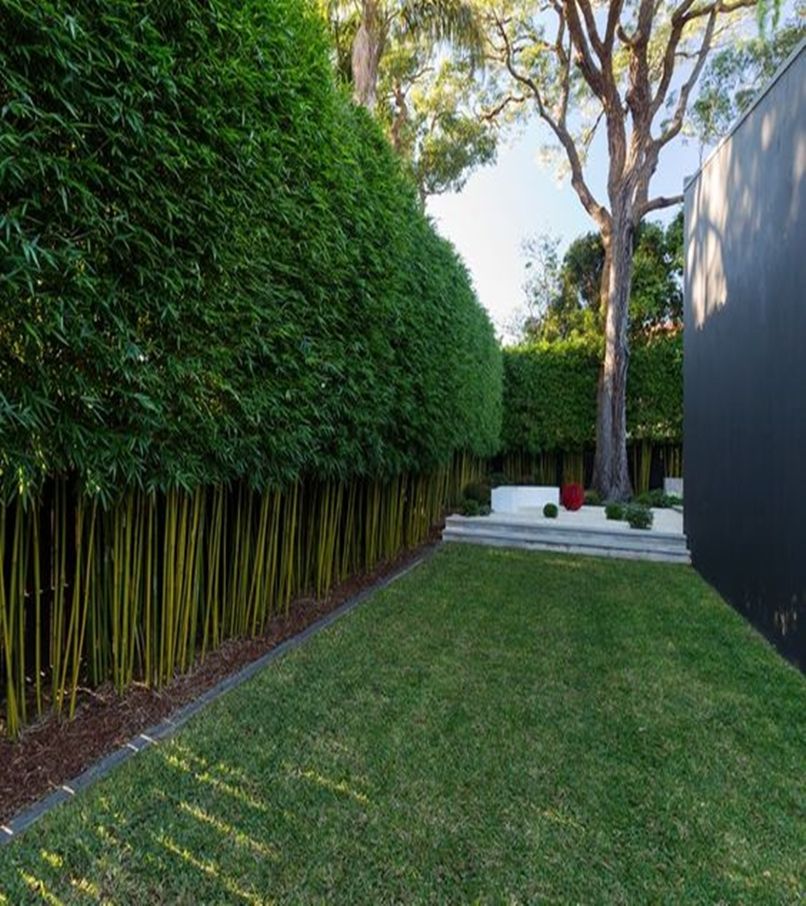 nine0187
nine0187 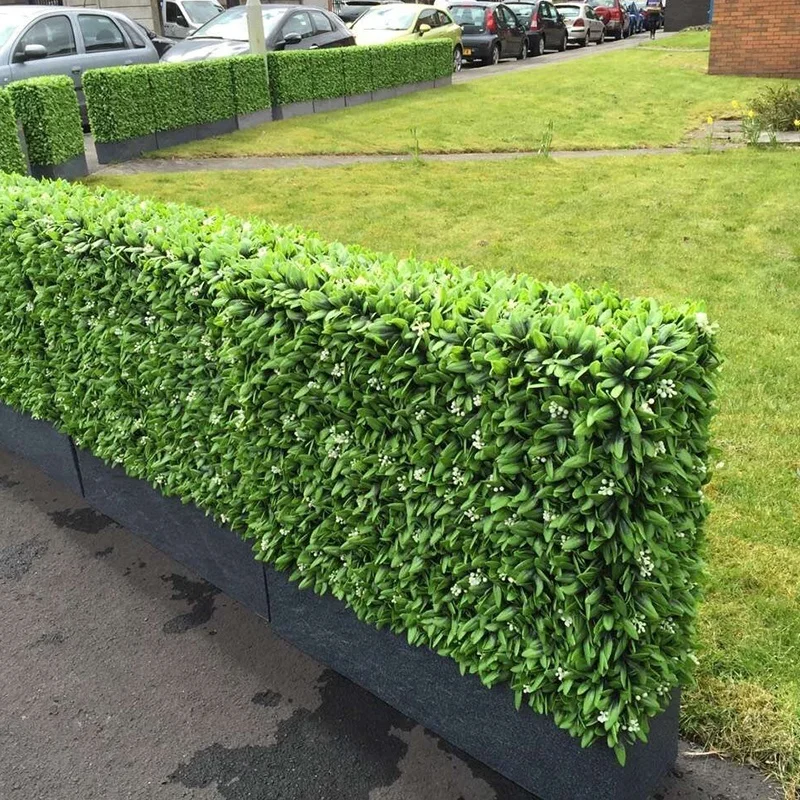 Do not choose this plant if you have children.
Do not choose this plant if you have children. 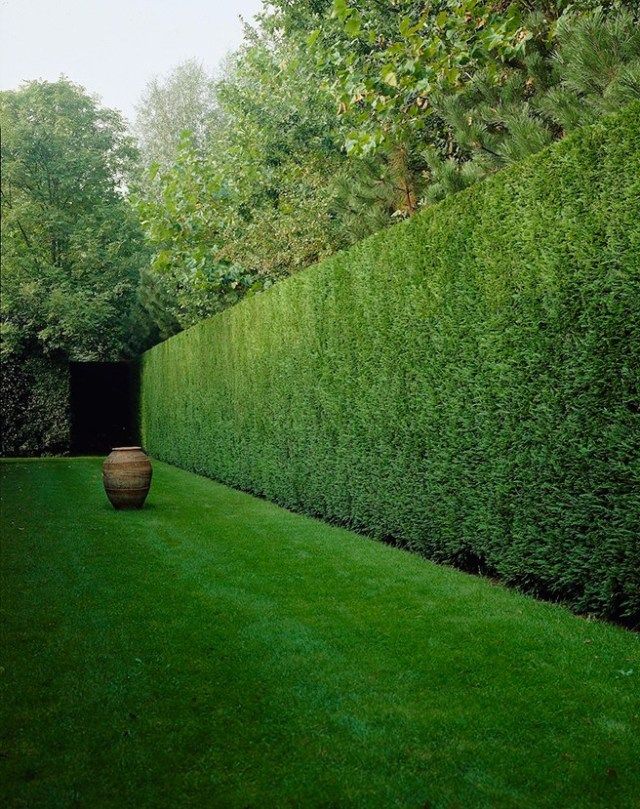 The undoubted advantages of the plant are:
The undoubted advantages of the plant are: 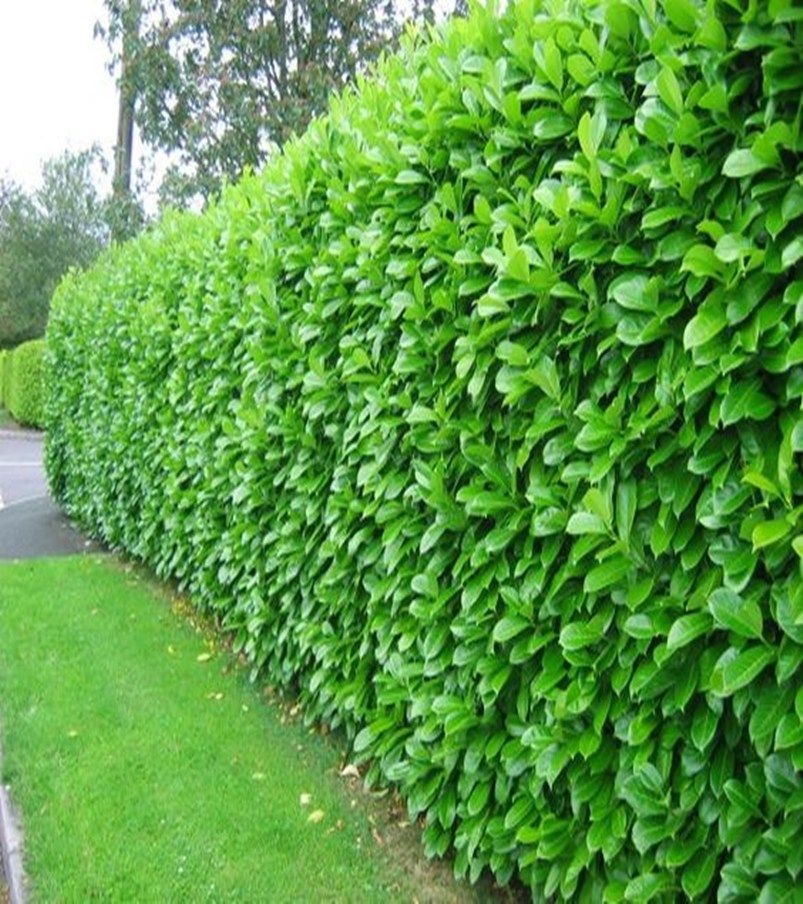
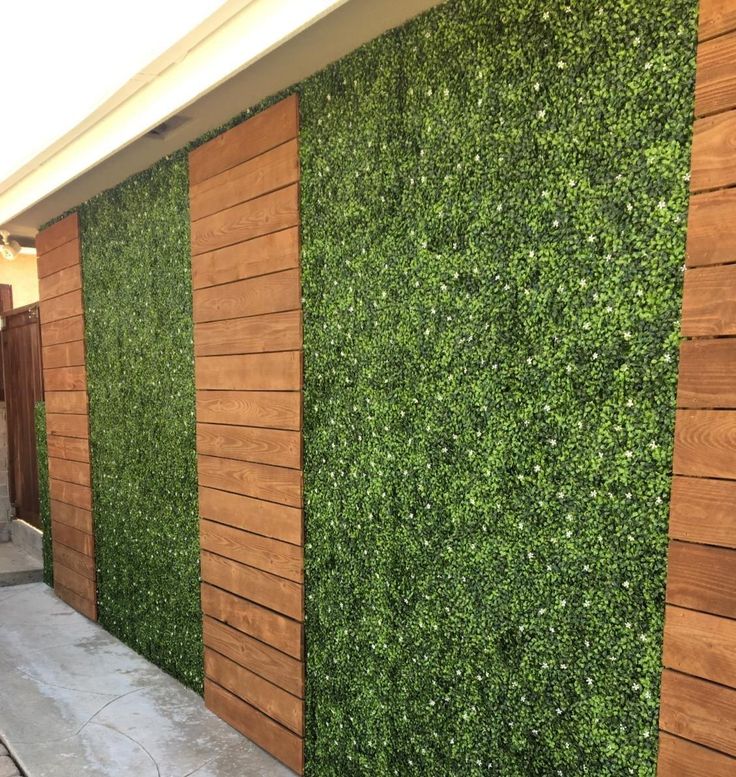 Hydrangea. Incredibly beautiful shrub with large leaves and very lush flowering. Paniculata and tree varieties are great for creating hedges. Hydrangea Benefits:
Hydrangea. Incredibly beautiful shrub with large leaves and very lush flowering. Paniculata and tree varieties are great for creating hedges. Hydrangea Benefits: 


